The years keep passing us by and more and more Christmas songs keep getting made. Singing about the yuletide season is a rite of passage now—and musicians are finding inventive ways to rewire a genre with far too many novelties. But that’s why we love Christmas music: it doesn’t always take itself so seriously. But sometimes Christmas music does take itself seriously, and what we’re left with are some of the most important recordings in history. For this list, I’ve tried to step away from doing 50 no-brainer songs. Do we need another ranking with Mariah Carey at the top of it? Considering that “All I Want For Christmas Is You” is about to break the record for most cumulative weeks spent at #1 on the Hot 100, I’d say it’s fine to branch out this time. And don’t get any bright ideas about that terrible John Lennon song showing up here. Instead, I came up with a batch of famous songs, forgotten songs, and songs that maybe you’ve never even heard of. Mostly, it’s just a bunch of music that I think is really great. The list spans nearly 70 years of material and is populated by everyone from John Prine and Tom Waits to Prince and Stevie Wonder with a couple of nobodies thrown in-between. Here are the 50 greatest Christmas songs of all time.
42. Felix Gross: “Love For Christmas”
 Felix Gross bounced around in the ‘40s and ‘50s, writing and recording for Down Beat and Chess Records. His band featured Henry Coker, Maxwell Davis, Buddy Floyd, Tiny Webb, Joe Howard, and Minor Robinson, among a few other players. He perfected what I’m calling the “savory jazz” genre. “Love For Christmas” starts with jingle bells before turning into this sensual blues joint with the right amount of barroom stank. Hell, the song even evokes a type of blues music that you can hear so clearly ripped off in Elvis’ “Heartbreak Hotel.” But Gross does it better and he does it cooler. And that sax solo from Howard? Sheesh, man.
Felix Gross bounced around in the ‘40s and ‘50s, writing and recording for Down Beat and Chess Records. His band featured Henry Coker, Maxwell Davis, Buddy Floyd, Tiny Webb, Joe Howard, and Minor Robinson, among a few other players. He perfected what I’m calling the “savory jazz” genre. “Love For Christmas” starts with jingle bells before turning into this sensual blues joint with the right amount of barroom stank. Hell, the song even evokes a type of blues music that you can hear so clearly ripped off in Elvis’ “Heartbreak Hotel.” But Gross does it better and he does it cooler. And that sax solo from Howard? Sheesh, man.
41. John Prine: “Souvenirs”
 Oh, what finger-picked sugar “Souvenirs” is. It’s too bad the story doesn’t go down so sweetly. “Christmas days have come and gone, broken toys and faded colors are all that’s left to linger on,” John Prine sings over his guitar’s melody. It’s my favorite part of Diamonds in the Rough, if only for Prine’s sharp take on life’s most trivial sections. Days start and end. In the middle hours, we fill them with the priceless artifacts we’ve collected. Prine sums it up solemnly: “Memories, they can’t be boughten. They can’t be won at carnivals for free. Well, it took me years to get those souvenirs, and I don’t know how they slipped away from me.”
Oh, what finger-picked sugar “Souvenirs” is. It’s too bad the story doesn’t go down so sweetly. “Christmas days have come and gone, broken toys and faded colors are all that’s left to linger on,” John Prine sings over his guitar’s melody. It’s my favorite part of Diamonds in the Rough, if only for Prine’s sharp take on life’s most trivial sections. Days start and end. In the middle hours, we fill them with the priceless artifacts we’ve collected. Prine sums it up solemnly: “Memories, they can’t be boughten. They can’t be won at carnivals for free. Well, it took me years to get those souvenirs, and I don’t know how they slipped away from me.”
Good Christmas Songs That Are Just Great Winter Songs
Fleet Foxes: “White Winter Hymnal”
It’s hard to keep Fleet Foxes’ “White Winter Hymnal” away from the holiday rotation playlist. It’s a massive tune and the standout track on the Washington folk band’s eponymous debut album from 2008. With Robin Pecknold’s voice at the center of the harmonic hurricane, his bandmates ensconced him in chamber pop instrumentation and deftly layered arrangements. It’s one of the best winter song ever written, going toe-to-toe with the strongest Christmas songs on this list.
Simon & Garfunkel: “A Hazy Shade of Winter”
Through the Bangles scored a #2 hit with their cover of it in 1987, “A Hazy Shade of Winter” was first brought into the world by Simon & Garfunkel in 1966 as a standalone single (and then, later, a part of their 1968 album Bookends). It’s an up-tempo folk rock tune that—as nearly every Simon & Garfunkel song tends to do—spotlights the duo’s unshakable vocal chemistry with each other. Simon writes about memory and changing tides in wintertime, noting the circumstance of how the world changes color as the year trudges on. “Seasons change with the scenery, weaving time in a tapestry,” he and Garfunkel harmonize. “Won’t you stop and remember me at any convenient time? Funny how my memory skips while looking over manuscripts of unpublished rhyme.”
Purple Mountains: “Snow is Falling in Manhattan”
“Snow is Falling in Manhattan” is the best part of David Berman’s final album—a swan song about drifting through wintertime in the Big Apple and marveling at the silence of snowfall. “Coming down in smithereens on Staten Island, Bronx and Queens, blanketing the city streets,” Berman hums along, as backing vocals from Anna St. Louis and Jeremy Earl join him. “And the streets beneath are fast asleep, songs build little rooms in time. And housed within the song’s design is the ghost the host has left behind.” The song ends adrift, with an old friend being swept inside to warm up beneath an afghan. “Snow is Falling in Manhattan” sounds like home.
40. Wham!: “Last Christmas”
 A Christmas song so legendary there’s a yearly challenge centered around how long into the holiday season a person can go without hearing it, “Last Christmas” is the pop masterpiece we will likely spin forever. Wham! ruled the world in the mid-1980s, and “Last Christmas” was just another Top 5 hit in a long line of them during the duo’s time with CBS Records. Led by George Michael’s tantalizing, glitzy lead vocal, Wham! made one of the most contagious holiday songs of all time and, even in 2025, it still stands up—perhaps more than it ever has. While the song plugs in all of the poppy, catchy tropes that plagued much of the Reagan years, “Last Christmas” could get made today and still ring in just as brilliantly.
A Christmas song so legendary there’s a yearly challenge centered around how long into the holiday season a person can go without hearing it, “Last Christmas” is the pop masterpiece we will likely spin forever. Wham! ruled the world in the mid-1980s, and “Last Christmas” was just another Top 5 hit in a long line of them during the duo’s time with CBS Records. Led by George Michael’s tantalizing, glitzy lead vocal, Wham! made one of the most contagious holiday songs of all time and, even in 2025, it still stands up—perhaps more than it ever has. While the song plugs in all of the poppy, catchy tropes that plagued much of the Reagan years, “Last Christmas” could get made today and still ring in just as brilliantly.
39. The Sonics: “Santa Claus”
 Go figure: the best garage rock band of all time made one of the best Christmas rock songs ever. On an LP featuring songs by the Fabulous Wailers and the Galaxies in 1965, “Santa Claus” is robust and bang-on. The vintage scruff and riffs don’t scream Christmastime, but Gerry Roslie’s lyrics certainly tell a yuletide tale of a gift wishlist and a dismissive Kris Kringle. “I want a brand new car, a twangy guitar, a cute little honey, and lots of money,” Roslie demands. “Santa Claus, won’t you tell me, please? Whatcha gonna put under my Christmas tree?” Crickets from the man in red. “Santa Claus” is a hoot and a ho-ho-ho, thrown by the best damn band around.
Go figure: the best garage rock band of all time made one of the best Christmas rock songs ever. On an LP featuring songs by the Fabulous Wailers and the Galaxies in 1965, “Santa Claus” is robust and bang-on. The vintage scruff and riffs don’t scream Christmastime, but Gerry Roslie’s lyrics certainly tell a yuletide tale of a gift wishlist and a dismissive Kris Kringle. “I want a brand new car, a twangy guitar, a cute little honey, and lots of money,” Roslie demands. “Santa Claus, won’t you tell me, please? Whatcha gonna put under my Christmas tree?” Crickets from the man in red. “Santa Claus” is a hoot and a ho-ho-ho, thrown by the best damn band around.
38. Marika Hackman: “Driving Under Stars”
 The standout track from her 2016 EP Wonderland, “Driving Under Stars” is Marika Hackman’s dreamy winter prize. The Hampshire multi-instrumentalist is no stranger to guitar-driven music, but “Driving Under Stars” is just a mesmerizing slice of dream-pop vibrance. It’s an arresting song set on navigating life’s meaning. But, largely, it aims to better understand surroundings while flirting with being aimless. “Through the towns, all dressed up in stupid lights,” Hackman laments. “Window down, I’ll cut my cheekbones on the ice. It’s the time of the season, the cold is unforgiving. But the lamp light on the snowflakes, life is still worth livin’.” This song hits my rotation year-round, largely because it’s so accessible and brilliant. Sometimes I forget that it takes place during Christmastime.
The standout track from her 2016 EP Wonderland, “Driving Under Stars” is Marika Hackman’s dreamy winter prize. The Hampshire multi-instrumentalist is no stranger to guitar-driven music, but “Driving Under Stars” is just a mesmerizing slice of dream-pop vibrance. It’s an arresting song set on navigating life’s meaning. But, largely, it aims to better understand surroundings while flirting with being aimless. “Through the towns, all dressed up in stupid lights,” Hackman laments. “Window down, I’ll cut my cheekbones on the ice. It’s the time of the season, the cold is unforgiving. But the lamp light on the snowflakes, life is still worth livin’.” This song hits my rotation year-round, largely because it’s so accessible and brilliant. Sometimes I forget that it takes place during Christmastime.
37. Pansy Division: “Homo Christmas”
 Openly queer punk band Pansy Division dropped an absolute heater back in the 1990s. And it was a huge moment for LGBTQ+ music across the board. The San Francisco quartet unloaded on Morrissey, having sex beneath the Christmas tree, and deserving cute boys instead of sweaters and socks. “Your family won’t give you encouragement, but let me give you sexual nourishment,” Jon Ginoli sings out. “Licking nipples, licking nuts, putting candy canes up each other’s butts. I wanna be your Christmas present, I wanna be your Christmas queer.” It was a barrier-obliterating moment for rock and roll, and “Homo Christmas” remains a fun listen 30 years later.
Openly queer punk band Pansy Division dropped an absolute heater back in the 1990s. And it was a huge moment for LGBTQ+ music across the board. The San Francisco quartet unloaded on Morrissey, having sex beneath the Christmas tree, and deserving cute boys instead of sweaters and socks. “Your family won’t give you encouragement, but let me give you sexual nourishment,” Jon Ginoli sings out. “Licking nipples, licking nuts, putting candy canes up each other’s butts. I wanna be your Christmas present, I wanna be your Christmas queer.” It was a barrier-obliterating moment for rock and roll, and “Homo Christmas” remains a fun listen 30 years later.
36. Harvie June Van: “Dasher”
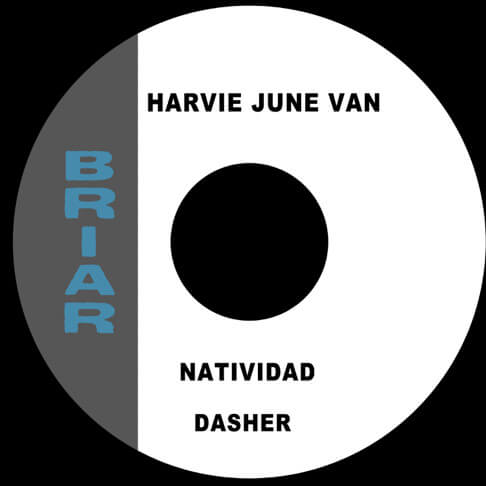 The daughter of an Ohio radio station DJ, Harvie June Van has been one of my greatest finds in 2025. She released less than a dozen singles between 1954 and 1970, her best being “Dasher,” a country-pop ditty that flips the bird to old Rudolph. Harvie rewrites the narrative, posing Dasher as the true hero of Santa Claus’ nighttime rooftop escapades instead of that red-nosed hack: “Everywhere old Santa goes, he has the light to see. Dasher has his job to do before they hit each trail, following old Santa with this light up on his tail.”
The daughter of an Ohio radio station DJ, Harvie June Van has been one of my greatest finds in 2025. She released less than a dozen singles between 1954 and 1970, her best being “Dasher,” a country-pop ditty that flips the bird to old Rudolph. Harvie rewrites the narrative, posing Dasher as the true hero of Santa Claus’ nighttime rooftop escapades instead of that red-nosed hack: “Everywhere old Santa goes, he has the light to see. Dasher has his job to do before they hit each trail, following old Santa with this light up on his tail.”
35. Sufjan Stevens: “That Was the Worst Christmas Ever!”
 There are quite a few Christmas songs to pull out of Sufjan Stevens’ catalog—his album Songs for Christmas alone is 42 tracks long and its successor, Silver & Gold, contains another 58. When push comes to shove, I think “That Was the Worst Christmas Ever!” takes the top prize, though “Joy to the World” would be a good alternative. Sufjan is one of our best modern songwriters across the board; it’s no surprise that his work in the holiday music field is stellar, too. “That Was the Worst Christmas Ever!” is one of the chapters on Songs for Christmas that Sufjan wrote himself, and it stands far above the traditional tracks sprinkled around it.
There are quite a few Christmas songs to pull out of Sufjan Stevens’ catalog—his album Songs for Christmas alone is 42 tracks long and its successor, Silver & Gold, contains another 58. When push comes to shove, I think “That Was the Worst Christmas Ever!” takes the top prize, though “Joy to the World” would be a good alternative. Sufjan is one of our best modern songwriters across the board; it’s no surprise that his work in the holiday music field is stellar, too. “That Was the Worst Christmas Ever!” is one of the chapters on Songs for Christmas that Sufjan wrote himself, and it stands far above the traditional tracks sprinkled around it.
34. Pretenders: “2000 Miles”
 A massive ballad from their third album Learning to Crawl, “2000 Miles” is a shining moment for Chrissie Hynde and the Pretenders. It’s not the brightest of stories, as Hynde writes about a long-distance relationship and two lovers spending Christmas apart. “In these frozen and silent nights, sometimes in a dream you appear outside the purple sky,” she sings. “Diamonds in the snow sparkle, our hearts were singing.” Not only is it a heartbreaking and painfully familiar narrative, “2000 Miles” is one of Hynde’s greatest tunes—and it’s one of the best Pretenders songs ever.
A massive ballad from their third album Learning to Crawl, “2000 Miles” is a shining moment for Chrissie Hynde and the Pretenders. It’s not the brightest of stories, as Hynde writes about a long-distance relationship and two lovers spending Christmas apart. “In these frozen and silent nights, sometimes in a dream you appear outside the purple sky,” she sings. “Diamonds in the snow sparkle, our hearts were singing.” Not only is it a heartbreaking and painfully familiar narrative, “2000 Miles” is one of Hynde’s greatest tunes—and it’s one of the best Pretenders songs ever.
33. Elton John: “Step Into Christmas”
 I’ll fight to the death for the mid-century, rock and roll Christmas songs. I have nearly gone to war over Paul McCartney’s “Wonderful Christmastime.” Perhaps if anyone comes for me in the QRTs on X, I will need to emblazon a “Support the Troops” bumper sticker on my car for all of the work I’ve done to outmuscle the naysayers. Don’t speak ill of Elton John’s “Step Into Christmas”; it’s the catchiest holiday rock song ever made. I’ll listen to it in the middle of the summer, I don’t care—inject that chorus into my veins. I implore you to let the soft animal of your musical taste want what it wants. Give in to the temptation of “Step Into Christmas. If you needed more reason as to why 1973 was Elton’s greatest year, look no further than here. It’s one of the slickest, coolest jams that our beloved English rock thespian has ever translated on-stage from Bernie Taupin’s lyrical musings.
I’ll fight to the death for the mid-century, rock and roll Christmas songs. I have nearly gone to war over Paul McCartney’s “Wonderful Christmastime.” Perhaps if anyone comes for me in the QRTs on X, I will need to emblazon a “Support the Troops” bumper sticker on my car for all of the work I’ve done to outmuscle the naysayers. Don’t speak ill of Elton John’s “Step Into Christmas”; it’s the catchiest holiday rock song ever made. I’ll listen to it in the middle of the summer, I don’t care—inject that chorus into my veins. I implore you to let the soft animal of your musical taste want what it wants. Give in to the temptation of “Step Into Christmas. If you needed more reason as to why 1973 was Elton’s greatest year, look no further than here. It’s one of the slickest, coolest jams that our beloved English rock thespian has ever translated on-stage from Bernie Taupin’s lyrical musings.
32. Roy Orbison: “Pretty Paper”
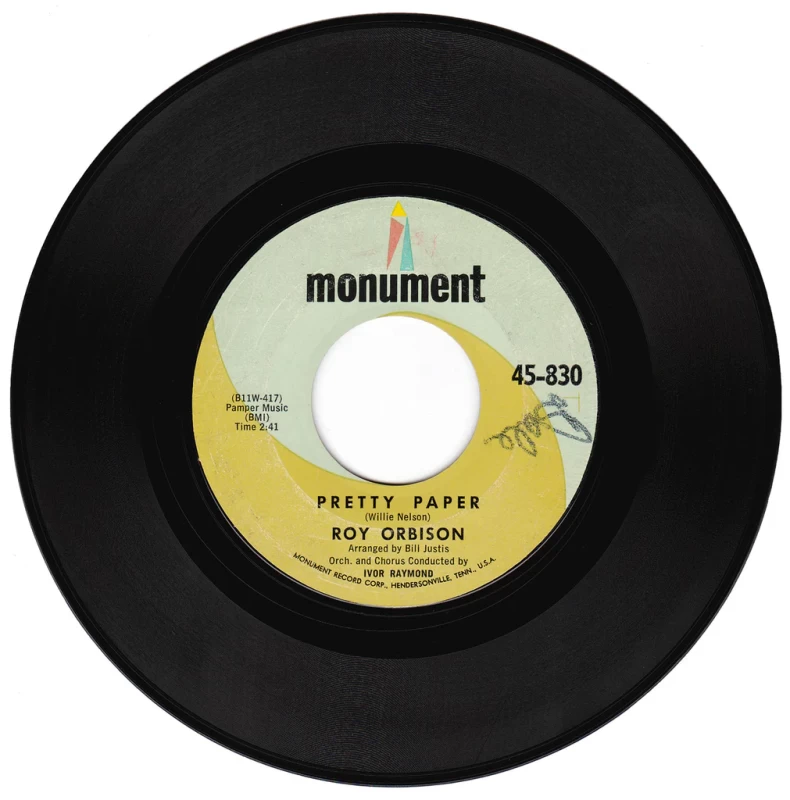 Willie Nelson wrote “Pretty Paper” and recorded a great version of it in 1964 with Jerry Reed, Pete Drake, and Chet Atkins, but it’s the Roy Orbison version from a year earlier that I return to most. The song’s about a man selling pencils and paper on the streets during Christmastime, inspired by Nelson remembering an amputee in Fort Worth who sold pencils and paper in front of a department store. Orbison and producer Fred Foster recorded the song at Decca Studios in London in ‘63 when Orbison was battling a 102-degree fever. “Pretty Paper” took 12 takes to complete, but what we got was a song swinging between country music and a big orchestra pocket. Orbison’s voice, dependable forever, soothes every note.
Willie Nelson wrote “Pretty Paper” and recorded a great version of it in 1964 with Jerry Reed, Pete Drake, and Chet Atkins, but it’s the Roy Orbison version from a year earlier that I return to most. The song’s about a man selling pencils and paper on the streets during Christmastime, inspired by Nelson remembering an amputee in Fort Worth who sold pencils and paper in front of a department store. Orbison and producer Fred Foster recorded the song at Decca Studios in London in ‘63 when Orbison was battling a 102-degree fever. “Pretty Paper” took 12 takes to complete, but what we got was a song swinging between country music and a big orchestra pocket. Orbison’s voice, dependable forever, soothes every note.
31. The Soul Duo: “Just a Sad Xmas”
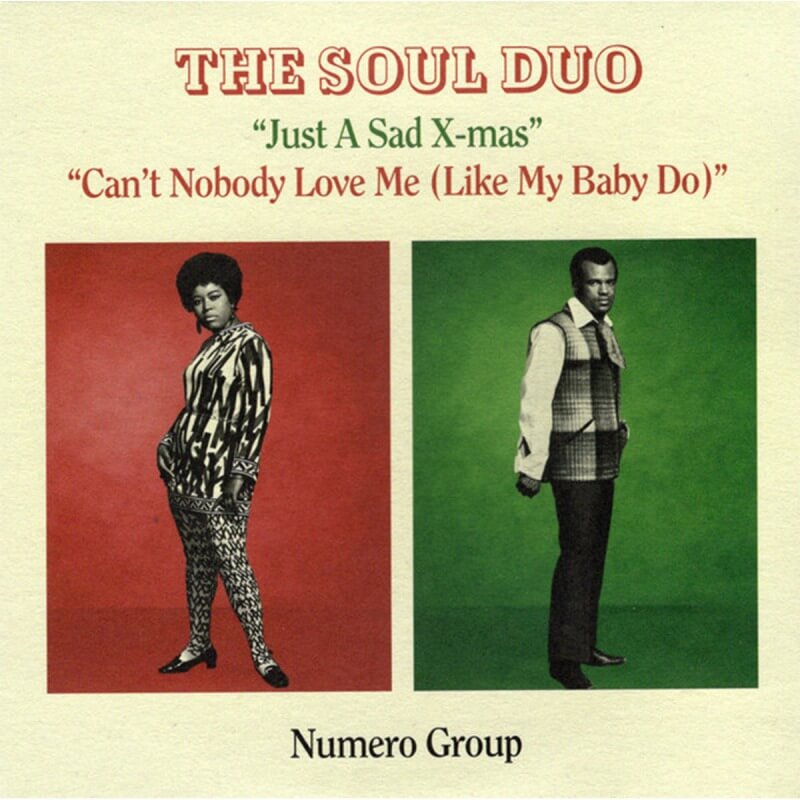 Many thanks to the great Numero Group for reissuing the Soul Duo’s 1968 single “Just a Sad Xmas.” Ida Sands and Joe Webster only recorded two songs for Shiptown, but they’re both yuletide zingers. The two singers belt all the way through “Just a Sad Xmas,” reaching for a Christmas “as bright as the stars, baby, as white as the snow.” Loneliness prevails and a guitar begins to undress around Sands and Webster. An organ pushes the Soul Duo even closer to the brink, and together they let go: “It’s just a sad, sad Christmasssss.” Magnetic.
Many thanks to the great Numero Group for reissuing the Soul Duo’s 1968 single “Just a Sad Xmas.” Ida Sands and Joe Webster only recorded two songs for Shiptown, but they’re both yuletide zingers. The two singers belt all the way through “Just a Sad Xmas,” reaching for a Christmas “as bright as the stars, baby, as white as the snow.” Loneliness prevails and a guitar begins to undress around Sands and Webster. An organ pushes the Soul Duo even closer to the brink, and together they let go: “It’s just a sad, sad Christmasssss.” Magnetic.
Greatest Overplayed Christmas Songs
Mariah Carey: “All I Want For Christmas Is You”
You either love “All I Want For Christmas Is You” or you hate “All I Want For Christmas Is You.” Most of us are feeling rather burnt out on it by this point, but there’s no denying that, when it’s all said and done, it’s quite possibly the catchiest Christmas song ever constructed. Carey is a legend for making such a timeless tune, and as soon as the weather drops its presence starts creeping up on us. For better or for worse, you can’t avoid “All I Want For Christmas Is You”—solidifying its greatness in perpetuity.
Brenda Lee: “Rockin’ Around the Christmas Tree”
A quintessential classic that merges country, pop, and rockabilly, Brenda Lee made the very first perfect Christmas song in 1958 and the rest of the musical world has been trying to match her shot towards stardom ever since. Boots Randolph’s instantly recognizable tenor saxophone solo punctuates a dreamy, waltzy rockabilly masterpiece. “Rockin’ Around the Christmas Tree” is one of those tracks that, somehow, outmaneuvers the holiday-centric box it was constructed from. I’m not saying it’s the kind of song you can listen to year-round, but it very well just might be.
30. Bleachers: “Merry Christmas, Please Don’t Call”
 At first, the “Merry Christmas, Please Don’t Call” melody suggests a The National impression, and Jack Antonoff certainly does sound like he’s channeling Matt Berninger a bit here and there, but once the synths kick into full gear, there’s no stopping how catchy the song is. Antonoff, in a submerged and slowed-down baritone, croons through swirls of reverb and piles of electronics until Evan Smith’s saxophone cuts through the twinkling wisps. The way Antonoff sings “and the toughest part is that we both know what happened to you, why you’re out on your own” was among my favorite vocal stims of 2024, as he curls his voice into a tone I can only describe as “New Jersey twang.” “Merry Christmas, Please Don’t Call” is Bleachers at their tightest and Jack Antonoff at his most compelling.
At first, the “Merry Christmas, Please Don’t Call” melody suggests a The National impression, and Jack Antonoff certainly does sound like he’s channeling Matt Berninger a bit here and there, but once the synths kick into full gear, there’s no stopping how catchy the song is. Antonoff, in a submerged and slowed-down baritone, croons through swirls of reverb and piles of electronics until Evan Smith’s saxophone cuts through the twinkling wisps. The way Antonoff sings “and the toughest part is that we both know what happened to you, why you’re out on your own” was among my favorite vocal stims of 2024, as he curls his voice into a tone I can only describe as “New Jersey twang.” “Merry Christmas, Please Don’t Call” is Bleachers at their tightest and Jack Antonoff at his most compelling.
29. Buck Owens & His Buckaroos: “All I Want For Christmas, Dear, Is You”
 Buck Owens had 21 #1 hits on the country music charts, so he’s hardly an obscurity. But I can’t think of that many Christmas song lists with “All I Want For Christmas, Dear, Is You” on them—which is a shame, because he and the Buckaroos sound positively splendid and weepy on the tune. Tucked behind an instrumental rendition of “Jingle Bells,” “All I Want For Christmas, Dear, Is You” aches in touches of pedal steel, fiddle, and shuffling drums. Owens sings about a long-distance lover whose absence has left him alone on the 25th. “Presents wrapped in green and gold have no arms for me to hold,” he croons, “no lips to whisper softly, ‘I love you.’”
Buck Owens had 21 #1 hits on the country music charts, so he’s hardly an obscurity. But I can’t think of that many Christmas song lists with “All I Want For Christmas, Dear, Is You” on them—which is a shame, because he and the Buckaroos sound positively splendid and weepy on the tune. Tucked behind an instrumental rendition of “Jingle Bells,” “All I Want For Christmas, Dear, Is You” aches in touches of pedal steel, fiddle, and shuffling drums. Owens sings about a long-distance lover whose absence has left him alone on the 25th. “Presents wrapped in green and gold have no arms for me to hold,” he croons, “no lips to whisper softly, ‘I love you.’”
28. Carpenters: “Merry Christmas, Darling”
 “Greeting cards have all been sent, the Christmas rush is through” is one of the most recognizable holiday song intros of the last half-century. “Merry Christmas, Darling” is one of the Carpenters’ best tunes ever, and Karen’s vocals are particularly stunning on it. She also does her own backing vocals, along with Richard—who plays piano, celesta, and Wurlitzer, too. But it’s Bob Messenger’s tenor sax solo that pierces through the wall of voices and turns the track into the orchestral, heavenly masterpiece it continues to be.
“Greeting cards have all been sent, the Christmas rush is through” is one of the most recognizable holiday song intros of the last half-century. “Merry Christmas, Darling” is one of the Carpenters’ best tunes ever, and Karen’s vocals are particularly stunning on it. She also does her own backing vocals, along with Richard—who plays piano, celesta, and Wurlitzer, too. But it’s Bob Messenger’s tenor sax solo that pierces through the wall of voices and turns the track into the orchestral, heavenly masterpiece it continues to be.
27. Kate Bush: “December Will Be Magic Again”
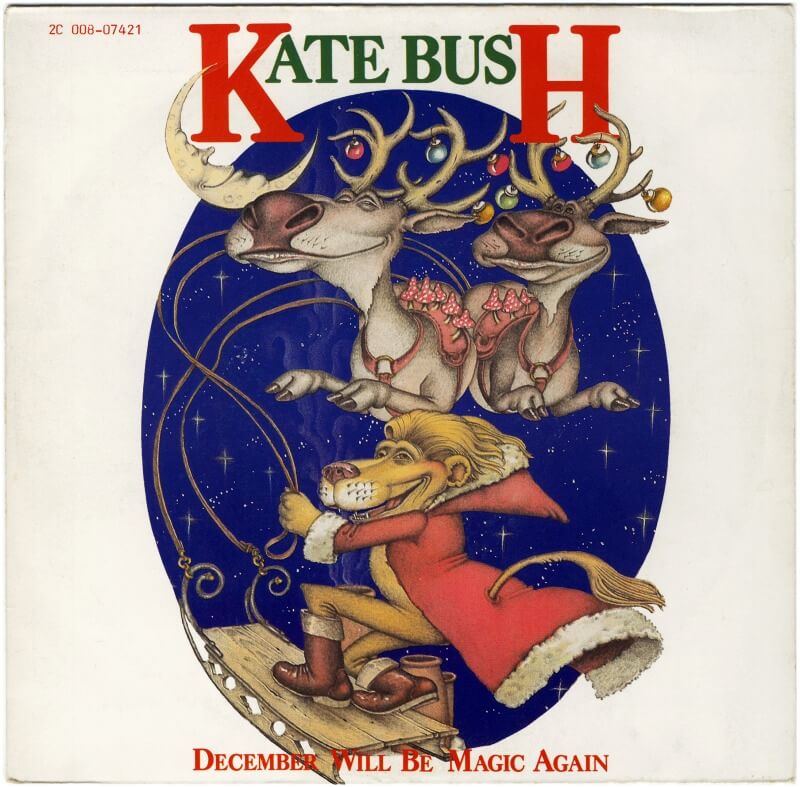 Released by Kate Bush as a single but scrubbed from streaming services, “December Will Be Magic Again” is a powerhouse track that rivaled any Christmas music that came out post-Spector’s A Christmas Gift For You. It’s a nuanced take on the joyous potential of the holiday season, as Bush sings about Bing Crosby, Saint Nick, Oscar Wilde, and mistletoe. “I want to hear your laugh, don’t let the mystery go now,” she confesses over a whimsical and mythical arrangement that, in a perfect world, exists outside of the caverns of YouTube. In Kate Bush’s December, there are lovers and there is singing and there are candlelit memories. The white city is gorgeous because icicled roofs send signals to the cosmos. It sounds like a place you could stay in forever.
Released by Kate Bush as a single but scrubbed from streaming services, “December Will Be Magic Again” is a powerhouse track that rivaled any Christmas music that came out post-Spector’s A Christmas Gift For You. It’s a nuanced take on the joyous potential of the holiday season, as Bush sings about Bing Crosby, Saint Nick, Oscar Wilde, and mistletoe. “I want to hear your laugh, don’t let the mystery go now,” she confesses over a whimsical and mythical arrangement that, in a perfect world, exists outside of the caverns of YouTube. In Kate Bush’s December, there are lovers and there is singing and there are candlelit memories. The white city is gorgeous because icicled roofs send signals to the cosmos. It sounds like a place you could stay in forever.
26. The Gems: “Love for Christmas”
 Not to be confused with the Felix Gross song mentioned a few entries earlier, this “Love for Christmas” is a girl-group pop treasure from the Chicago-born Gems, courtesy of Chess Records. It’s one of those tunes you hear once and want to hear again and again and again. If I could add any song into the holiday radio pantheon, I’m submitting this Gems joint. When the girls harmonize on “we’ll have the merriest, merriest Christmas of all time, no, no, no,” I get a few goosebumps. It sounds so good, and the brass backing erupts incredibly throughout. The Gems didn’t get enough love when they were around, but you might recognize those lead vocals. That’s a then-unknown, teen-aged Minnie Riperton (performing under the name Andrea Davis) singing. What a small world until “Love for Christmas” makes it grow a few sizes.
Not to be confused with the Felix Gross song mentioned a few entries earlier, this “Love for Christmas” is a girl-group pop treasure from the Chicago-born Gems, courtesy of Chess Records. It’s one of those tunes you hear once and want to hear again and again and again. If I could add any song into the holiday radio pantheon, I’m submitting this Gems joint. When the girls harmonize on “we’ll have the merriest, merriest Christmas of all time, no, no, no,” I get a few goosebumps. It sounds so good, and the brass backing erupts incredibly throughout. The Gems didn’t get enough love when they were around, but you might recognize those lead vocals. That’s a then-unknown, teen-aged Minnie Riperton (performing under the name Andrea Davis) singing. What a small world until “Love for Christmas” makes it grow a few sizes.
25. Frightened Rabbit: “It’s Christmas So We’ll Stop”
 Recorded by Scottish rock band Frightened Rabbit in 2007, “It’s Christmas So We’ll Stop” is a song that details how, during the holiday season, we can put our differences aside and look for hope together. It’s a songwriting highpoint from bandleader Scott Hutchison, as he mines for some type of meaning in a gesture of holiday unity. “Let the rot stop just for one day,” he sings. “Only good red eyes, red suits, and faces will radiate. And the cold will hide its face, now the cold has turned away. We can be best friends with the people we hate, ‘cause we’ve all got blood and it’s warmer than you’d think.” In this world—which Hutchison so painfully constructs for us—we are hanging onto memories, remembering loved ones we’ve lost, and, the next day, going back to our old selves.
Recorded by Scottish rock band Frightened Rabbit in 2007, “It’s Christmas So We’ll Stop” is a song that details how, during the holiday season, we can put our differences aside and look for hope together. It’s a songwriting highpoint from bandleader Scott Hutchison, as he mines for some type of meaning in a gesture of holiday unity. “Let the rot stop just for one day,” he sings. “Only good red eyes, red suits, and faces will radiate. And the cold will hide its face, now the cold has turned away. We can be best friends with the people we hate, ‘cause we’ve all got blood and it’s warmer than you’d think.” In this world—which Hutchison so painfully constructs for us—we are hanging onto memories, remembering loved ones we’ve lost, and, the next day, going back to our old selves.
24. Paul McCartney: “Wonderful Christmastime”
 If you don’t like “Wonderful Christmastime,” grow up. All of these anti-“Wonderful Christmastime” takes are getting old. Just admit the truth: Paul McCartney wrote one of the most addictive holiday melodies of all time. And he did it all by himself! McCartney played keys, synths, guitar, bass, drums, percussion, and jingle bells—and he produced the track. I feel no animosity towards anyone who doesn’t like this song, but I also don’t respect your choice. Only someone who has a firm grasp on pop songcraft can make something sound so simplistic yet practically irreplicable. “Wonderful Christmastime” is the gift that keeps on giving, and I’d like a six-hour loop of it pronto—the uncut version practically carries on for that long anyhow.
If you don’t like “Wonderful Christmastime,” grow up. All of these anti-“Wonderful Christmastime” takes are getting old. Just admit the truth: Paul McCartney wrote one of the most addictive holiday melodies of all time. And he did it all by himself! McCartney played keys, synths, guitar, bass, drums, percussion, and jingle bells—and he produced the track. I feel no animosity towards anyone who doesn’t like this song, but I also don’t respect your choice. Only someone who has a firm grasp on pop songcraft can make something sound so simplistic yet practically irreplicable. “Wonderful Christmastime” is the gift that keeps on giving, and I’d like a six-hour loop of it pronto—the uncut version practically carries on for that long anyhow.
23. The Drifters: “White Christmas”
 “White Christmas,” written by Irving Berlin for the 1942 film Holiday Inn, has been covered by everyone from Michael Bublé and the Glee Cast to Meghan Trainor and Bette Midler. The Bing Crosby rendition is the most famous, and no one is disputing that. But it’s not the best. No, that designation belongs to the Drifters, who boasted the singing talents of lead vocalist Clyde McPhatter and their bass vocalist Bill Pinkey in 1954. The track would peak at #2 on the Billboard R&B chart. Because of radio segregation at the time, “White Christmas” was mostly popular in the Black community. Its use in films like Home Alone and The Santa Clause helped it find larger audiences later on, and now it exists as one of the greatest doo-wop Christmas songs ever.
“White Christmas,” written by Irving Berlin for the 1942 film Holiday Inn, has been covered by everyone from Michael Bublé and the Glee Cast to Meghan Trainor and Bette Midler. The Bing Crosby rendition is the most famous, and no one is disputing that. But it’s not the best. No, that designation belongs to the Drifters, who boasted the singing talents of lead vocalist Clyde McPhatter and their bass vocalist Bill Pinkey in 1954. The track would peak at #2 on the Billboard R&B chart. Because of radio segregation at the time, “White Christmas” was mostly popular in the Black community. Its use in films like Home Alone and The Santa Clause helped it find larger audiences later on, and now it exists as one of the greatest doo-wop Christmas songs ever.
22. Loretta Lynn: “Country Christmas”
 From her 1966 album of the same name, “Country Christmas” is an unbelievably perfect country song about hanging out with loved ones and having a great time doing so. “With all the family gathered ‘round our pretty Christmas tree, we’ll open up our presents Christmas Eve about midnight,” Lynn sings. “We’ll have a good old country Christmas all right.” Though the album is filled with traditional tracks like “White Christmas,” “Santa Claus Is Coming to Town,” and “Silver Bells,” Lynn herself wrote “Country Christmas” and it’s the immediate standout. Lynn always had a magical lilt in her voice, and it’s that charm that shines from end to end here.
From her 1966 album of the same name, “Country Christmas” is an unbelievably perfect country song about hanging out with loved ones and having a great time doing so. “With all the family gathered ‘round our pretty Christmas tree, we’ll open up our presents Christmas Eve about midnight,” Lynn sings. “We’ll have a good old country Christmas all right.” Though the album is filled with traditional tracks like “White Christmas,” “Santa Claus Is Coming to Town,” and “Silver Bells,” Lynn herself wrote “Country Christmas” and it’s the immediate standout. Lynn always had a magical lilt in her voice, and it’s that charm that shines from end to end here.
21. Otis Redding: “Merry Christmas Baby”
 “Merry Christmas Baby,” an R&B standard filed by Lou Baxter and Johnny Moore back in 1947, has been covered by all the greats: Chuck Berry, James Brown, Ike & Tina Turner, Elvis, Springsteen, B.B. King. But no version is quite as terrific as Otis Redding’s, which he recorded only nine days before his death in December 1967. Though it wound up a B-side to “White Christmas,” it’s still quintessential Otis—a voice worth a couple million ensconced in a horn arrangement that won’t quit. “Merry Christmas Baby” is one of the coolest songs ever recorded because Otis and producer Steve Cropper got their hands on it. When the King of Soul hits that note on “I feel like I’m in paradise,” I go there, too.
“Merry Christmas Baby,” an R&B standard filed by Lou Baxter and Johnny Moore back in 1947, has been covered by all the greats: Chuck Berry, James Brown, Ike & Tina Turner, Elvis, Springsteen, B.B. King. But no version is quite as terrific as Otis Redding’s, which he recorded only nine days before his death in December 1967. Though it wound up a B-side to “White Christmas,” it’s still quintessential Otis—a voice worth a couple million ensconced in a horn arrangement that won’t quit. “Merry Christmas Baby” is one of the coolest songs ever recorded because Otis and producer Steve Cropper got their hands on it. When the King of Soul hits that note on “I feel like I’m in paradise,” I go there, too.
Obligatory Classic Rock Christmas Song Checkpoint
Eagles: “Please Come Home for Christmas”
Few rock acts in the last 50 years have been as polarizing as the Eagles—and for what reason? Is it because they made some of the best-sounding country and soft-rock songs ever? I don’t get it. Their rendition of Charles Brown’s 1960 holiday tune “Please Come Home for Christmas” is a great rock track that came out at a time when practically no other act in the genre was making good holiday music. It was the first Christmas song to reach the Top 20 on the Hot 100 since Roy Orbison’s “Pretty Paper” in 1963, and it endures as an FM radio staple even in 2025. Don Felder’s guitar solo and Don Henley’s lead vocal are a match made in heaven, and Glenn Frey’s teardrop piano parts move me deeply.
Bruce Springsteen: “Santa Claus Is Comin’ to Town”
Only the Boss could make a holiday staple sound so sexy and macho—and that’s exactly what Bruce Springsteen & the E Street Band did in 1975 when they recorded a live rendition of “Santa Claus Is Comin’ to Town” at C.W. Post College in Brookville, New York. They use the refrain from the Crystals’ 1963 recording, and it’s just a deliriously great performance. Saxophonist Clarence Clemons provides some very timely ho ho ho”s that inevitably causes Springsteen to crack up. This one’s a party.
20. Stevie Wonder: “What Christmas Means to Me”
 Stevie Wonder has made a lot of good Christmas tunes. I mean, “Someday at Christmas” alone is an all-timer. But, I do sincerely think that “What Christmas Means to Me” is much, much better—just a firestorm of catchiness. Performed in 1967, Motown writer Anna Gaye was the primary composer and, without a doubt, turned in an all-time classic holiday hit. Punctuated by Wonder’s generational voice, charisma, and harmonica-playing—instrumentation from always-dependable Funk Brothers in tow—“What Christmas Means to Me” stands alone.
Stevie Wonder has made a lot of good Christmas tunes. I mean, “Someday at Christmas” alone is an all-timer. But, I do sincerely think that “What Christmas Means to Me” is much, much better—just a firestorm of catchiness. Performed in 1967, Motown writer Anna Gaye was the primary composer and, without a doubt, turned in an all-time classic holiday hit. Punctuated by Wonder’s generational voice, charisma, and harmonica-playing—instrumentation from always-dependable Funk Brothers in tow—“What Christmas Means to Me” stands alone.
19. Don McGinnis & The Cactus Cutups: “I’ll Be Home For Christmas”
 You may not know Don McGinnis’ name, but “I’ll be Home For Christmas” is unforgettable once you’ve heard it. The 1968 country song is virtually unheard of by now, but to me it serves as a great reminder of how fantastic that era and genre’s holiday music was. Nostalgic imagery is potent in McGinnis’ hands, as he recalls church bells ringing “peace on Earth” and a happy heart singing, “I remember the home of my childhood and the fields are white with snow, and the candles on the Christmas tree that burn with a soft, warm glow.”
You may not know Don McGinnis’ name, but “I’ll be Home For Christmas” is unforgettable once you’ve heard it. The 1968 country song is virtually unheard of by now, but to me it serves as a great reminder of how fantastic that era and genre’s holiday music was. Nostalgic imagery is potent in McGinnis’ hands, as he recalls church bells ringing “peace on Earth” and a happy heart singing, “I remember the home of my childhood and the fields are white with snow, and the candles on the Christmas tree that burn with a soft, warm glow.”
18. Greg Lake & Sergei Prokofiev / Emerson, Lake & Palmer: “I Believe in Father Christmas”
 I am not one of prog-rock’s loyal soldiers, unfortunately. I dig it, don’t get me wrong, but my passions lay elsewhere. That being said, I heard “I Believe in Father Christmas” and have been hung up on it ever since. Greg Lake wrote it in 1974 in protest of holiday commercialization. Many have interpreted it as an anti-religous song. Me? I agree with the former. Lake draws on the promise of a merry dream and the way it breaks. “They sold me a silent night,” he sings. “They sold me a fairy story, that I believed in the yuletide.” His ideas turn to hope and bravery, to “a yawn in the first light of dawn.” Backed by a folk symphony and the “Troika” portion of Sergei Prokofiev’s Lieutenant Kijé Suite, Lake delivers to us a firm but picturesque destination: “The Christmas you get, you deserve.”
I am not one of prog-rock’s loyal soldiers, unfortunately. I dig it, don’t get me wrong, but my passions lay elsewhere. That being said, I heard “I Believe in Father Christmas” and have been hung up on it ever since. Greg Lake wrote it in 1974 in protest of holiday commercialization. Many have interpreted it as an anti-religous song. Me? I agree with the former. Lake draws on the promise of a merry dream and the way it breaks. “They sold me a silent night,” he sings. “They sold me a fairy story, that I believed in the yuletide.” His ideas turn to hope and bravery, to “a yawn in the first light of dawn.” Backed by a folk symphony and the “Troika” portion of Sergei Prokofiev’s Lieutenant Kijé Suite, Lake delivers to us a firm but picturesque destination: “The Christmas you get, you deserve.”
17. John Cale: “Child’s Christmas in Wales”
 The opening track from his 1973 album Paris 1919, John Cale’s“Child’s Christmas in Wales” was inspired by the Dylan Thomas poem of the same name. It’s a beautiful slice of baroque pop, and the greatest art pop holiday song ever written—a tune so good that it ought to be played year-round. “Then wearily, the footsteps worked the hallelujah crowds,” Cale sings out. “Too late but wait the long-legged bait, tripped uselessly around Sebastopol Adrianopolis.” It’s poetic and marvelous, as Cale channels orchestral arrangements and contemporary pop chart stylings. All of Paris 1919 is brilliant, but “Child’s Christmas in Wales” exists in a pantheon of its own.
The opening track from his 1973 album Paris 1919, John Cale’s“Child’s Christmas in Wales” was inspired by the Dylan Thomas poem of the same name. It’s a beautiful slice of baroque pop, and the greatest art pop holiday song ever written—a tune so good that it ought to be played year-round. “Then wearily, the footsteps worked the hallelujah crowds,” Cale sings out. “Too late but wait the long-legged bait, tripped uselessly around Sebastopol Adrianopolis.” It’s poetic and marvelous, as Cale channels orchestral arrangements and contemporary pop chart stylings. All of Paris 1919 is brilliant, but “Child’s Christmas in Wales” exists in a pantheon of its own.
16. Lightnin’ Hopkins: “Santa”
 Texas blues picker Lightnin’ Hopkins sang a few holiday numbers in his day, including “Happy New Year,” which is a favorite of mine. But this is a Christmas list, and “Santa” belongs here. Pulled from the back-end of his 1962 LP Mojo Hand, Hopkins’ blues pedigree gets some R&B accompaniment. But the commercial flavor is stripped back on “Santa,” a tall tale about Santa Claus begging for charity on the New York City streets. But Santa takes care of God’s saintly children, Hopkins’ reckons. Suddenly, it’s all a folktale, told by Hopkins and the voice of his rattling guitar: “Mother said, ‘A million year ago Santa Claus come to me, now this year he gon’ come to you.’”
Texas blues picker Lightnin’ Hopkins sang a few holiday numbers in his day, including “Happy New Year,” which is a favorite of mine. But this is a Christmas list, and “Santa” belongs here. Pulled from the back-end of his 1962 LP Mojo Hand, Hopkins’ blues pedigree gets some R&B accompaniment. But the commercial flavor is stripped back on “Santa,” a tall tale about Santa Claus begging for charity on the New York City streets. But Santa takes care of God’s saintly children, Hopkins’ reckons. Suddenly, it’s all a folktale, told by Hopkins and the voice of his rattling guitar: “Mother said, ‘A million year ago Santa Claus come to me, now this year he gon’ come to you.’”
15. James Brown: “Santa Claus Go Straight to the Ghetto”
 Released on A Soulful Christmas in 1968, “Santa Claus Go Straight to the Ghetto” is a masterclass in funk holiday music proctored by the Godfather of Soul himself. “Fill every stocking you find, the kids are gonna love you so,” Brown sings. “Leave a toy for Johnny, leave a doll for Mary, leave something pretty for Donnie, and don’t forget about Gary.” It’s a Christmas song that came out when radio segregation was very much still ongoing, so it remains largely absent from contemporary holiday playlists. But it’s a brilliant funk tune that soothes without ever kicking up too much of a fuss. Tell your local station to play this one loud, and tell them James Brown sent you!
Released on A Soulful Christmas in 1968, “Santa Claus Go Straight to the Ghetto” is a masterclass in funk holiday music proctored by the Godfather of Soul himself. “Fill every stocking you find, the kids are gonna love you so,” Brown sings. “Leave a toy for Johnny, leave a doll for Mary, leave something pretty for Donnie, and don’t forget about Gary.” It’s a Christmas song that came out when radio segregation was very much still ongoing, so it remains largely absent from contemporary holiday playlists. But it’s a brilliant funk tune that soothes without ever kicking up too much of a fuss. Tell your local station to play this one loud, and tell them James Brown sent you!
14. Vince Guaraldi Trio: “Christmas Time Is Here (Vocal Version)”
 There is nothing more beautiful than putting your A Charlie Brown Christmas vinyl on and letting the winter night drift away. Is any group more synonymous with Christmas than the Vince Guaraldi Trio? “O Tannenbaum” would have been a fair choice here too, but the vocal version of “Christmas Time Is Here” is unlike anything else I’ve ever encountered. It’s beautiful, innocent, and stirring, as Guaraldi’s piano-playing is a special sound to behold. The backing percussion nearly sounds like a crackling record, as if we have always been meant to hear the song years after it was performed. Though it was written for a Peanuts special, “Christmas Time Is Here” somehow feels untethered to any particular source material. It’s for everyone, whether you’ve watched A Charlie Brown Christmas or not. That’s real magic right there.
There is nothing more beautiful than putting your A Charlie Brown Christmas vinyl on and letting the winter night drift away. Is any group more synonymous with Christmas than the Vince Guaraldi Trio? “O Tannenbaum” would have been a fair choice here too, but the vocal version of “Christmas Time Is Here” is unlike anything else I’ve ever encountered. It’s beautiful, innocent, and stirring, as Guaraldi’s piano-playing is a special sound to behold. The backing percussion nearly sounds like a crackling record, as if we have always been meant to hear the song years after it was performed. Though it was written for a Peanuts special, “Christmas Time Is Here” somehow feels untethered to any particular source material. It’s for everyone, whether you’ve watched A Charlie Brown Christmas or not. That’s real magic right there.
13. Cocteau Twins: “Frosty the Snowman”
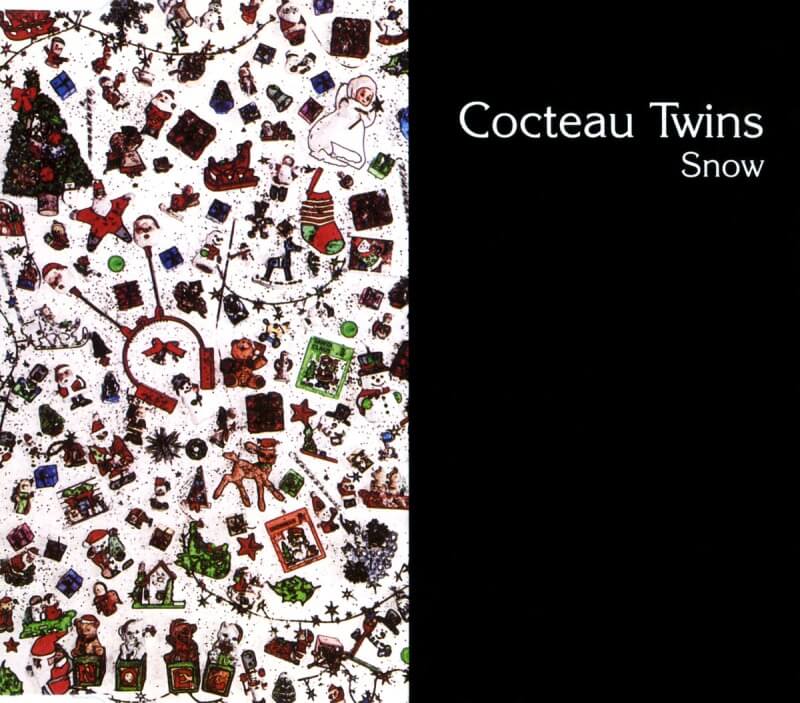 The Cocteau Twins’ entire Snow EP is immaculate, but “Frosty the Snowman” is the star of the show. Elizabeth Fraser’s lead vocals are legible and awing, and Robin Guthrie and Simon Raymonde fill in the instrumental gaps perfectly. There’s a reason why the trio were the greatest dream-pop group to ever do it, and the fact that they could completely rewrite the book on a holiday staple like “Frosty the Snowman” is not a mark of how malleable the song is so much as it’s a direct example of just how great the Cocteau Twins were. It’s a performance that, while it was recorded in December 1993, feels futuristic even now, 32 years later.
The Cocteau Twins’ entire Snow EP is immaculate, but “Frosty the Snowman” is the star of the show. Elizabeth Fraser’s lead vocals are legible and awing, and Robin Guthrie and Simon Raymonde fill in the instrumental gaps perfectly. There’s a reason why the trio were the greatest dream-pop group to ever do it, and the fact that they could completely rewrite the book on a holiday staple like “Frosty the Snowman” is not a mark of how malleable the song is so much as it’s a direct example of just how great the Cocteau Twins were. It’s a performance that, while it was recorded in December 1993, feels futuristic even now, 32 years later.
12. Counting Crows: “A Long December”
 Not all Christmas songs are meant to be happy, nor do they need to be explicitly labeled. Counting Crows turned their sorrow into a triumph on “A Long December,” and Adam Duritz’s lament of Hollywood loneliness and romantic dissolution is still painfully familiar, especially when he sings “Maybe this year will be better than the last, I can’t remember all the times I tried to tell myself to hold on to these moments as they pass.” Once David Bryson lays into that guitar solo two minutes in, it’s quite clear that “A Long December” is one of the best holiday rock songs of all time. But when Charlie Gillingham’s accordion kicks into high-gear, there’s no going back. You’re neck-deep in immortality. And it’s only one more day up in the canyon.
Not all Christmas songs are meant to be happy, nor do they need to be explicitly labeled. Counting Crows turned their sorrow into a triumph on “A Long December,” and Adam Duritz’s lament of Hollywood loneliness and romantic dissolution is still painfully familiar, especially when he sings “Maybe this year will be better than the last, I can’t remember all the times I tried to tell myself to hold on to these moments as they pass.” Once David Bryson lays into that guitar solo two minutes in, it’s quite clear that “A Long December” is one of the best holiday rock songs of all time. But when Charlie Gillingham’s accordion kicks into high-gear, there’s no going back. You’re neck-deep in immortality. And it’s only one more day up in the canyon.
11. Merle Haggard & The Strangers: “If We Make It Through December”
 Popularized this decade by Phoebe Bridgers for her long-running series of Christmas cover songs, Merle Haggard & The Strangers’ “If We Make It Through December” is the greatest country holiday song of all time. Released in 1973, it’s an uncharacteristically sad holiday tune, with Haggard lamenting unemployment and loneliness and yearning for the promise of warmer months. “I don’t mean to hate December, it’s meant to be the happy time of year,” he sings. “And my little girl don’t understand why daddy can’t afford no Christmas here.” “If We Make It Through December” is a stark representation of, in my experience, seasonal depression and how colder weather and less daylight aren’t too joyful. But Haggard’s story remains hopeful. Here’s to hoping his narrator made it to California after all.
Popularized this decade by Phoebe Bridgers for her long-running series of Christmas cover songs, Merle Haggard & The Strangers’ “If We Make It Through December” is the greatest country holiday song of all time. Released in 1973, it’s an uncharacteristically sad holiday tune, with Haggard lamenting unemployment and loneliness and yearning for the promise of warmer months. “I don’t mean to hate December, it’s meant to be the happy time of year,” he sings. “And my little girl don’t understand why daddy can’t afford no Christmas here.” “If We Make It Through December” is a stark representation of, in my experience, seasonal depression and how colder weather and less daylight aren’t too joyful. But Haggard’s story remains hopeful. Here’s to hoping his narrator made it to California after all.
Christmas Songs So Bad They’re Actually Good
Beat Happening: “Christmas”
Buried in the middle of their 24-song, 46-minute first album, “Christmas” is Beat Happening’s take on the worst day imaginable, Christmas or otherwise. “I didn’t get no presents on Christmas, and I sure didn’t get none today,” Calvin Johnson howls out. “Learned my lesson, life is one long session of disappointment, heartache, pain.” Not even sex three times with three separate women in a day can’t undo the hell when Johnson wakes up. Beat Happening probably recorded “Christmas” in one take, and it’s just Johnson grovelling over an exhausted, looping drum beat. I love each second of it despite not wanting to hear it ever again.
Bob Dylan: “Must Be Santa”
In high school, my best friend would blast this song every morning. It didn’t even have to be December. He and I don’t speak much anymore, but “Must Be Santa” is stuck in my head forever—a persistent, nostalgic polka reminder of someone I miss. Good, bad, I don’t care. I’ll queue it up all year ’round. Have you seen the music video? It’s incredible.
The Hives & Cyndi Lauper: “A Christmas Duel”
My official nomination for the greatest Christmas duet of all time, there’s something so fun and catchy about “A Christmas Duel”—the scathing collaboration between the Hives and Cyndi Lauper. It’s too bad I don’t know anyone who likes it besides me. Both artists are so emblematic of the generations they found success in, and hearing them come together to create such a mirage of pop rock with a glaze of punk merriment is all I could want, no matter how cheesy. And this track is such a damn riot, too. “Who the fuck anyway wants a Christmas tree?” Lauper howls out. “I married you last year, bet you thought I was sober, right?” Howlin’ Pelle Almqvist jabs back. It’s spiteful, nasty, sexy and ridiculously catchy. Written by the late Randy Fitzsimmons, “A Christmas Duel” ought to live on far after we all kick the bucket.
10. The Ronettes: “Sleigh Ride”
 Phil Spector’s Christmas album is 62 years old, yet it remains the single greatest holiday record ever constructed. The producer/label leader brought all of his girl groups together and shepherded them into the echelons of pop music greatness. Not only are all of the songs on A Christmas Gift For You certified eternal Christmas hits, but they are some of the best contemporary songs ever, period. The Ronettes’ “Sleigh Ride” is just one of many standouts, as Ronnie Spector and co. deliver a powerfully catchy rendition of Leroy Anderson and Mitchell Parish’s all-time composition—with a backing arrangement from the Wrecking Crew, no less.
Phil Spector’s Christmas album is 62 years old, yet it remains the single greatest holiday record ever constructed. The producer/label leader brought all of his girl groups together and shepherded them into the echelons of pop music greatness. Not only are all of the songs on A Christmas Gift For You certified eternal Christmas hits, but they are some of the best contemporary songs ever, period. The Ronettes’ “Sleigh Ride” is just one of many standouts, as Ronnie Spector and co. deliver a powerfully catchy rendition of Leroy Anderson and Mitchell Parish’s all-time composition—with a backing arrangement from the Wrecking Crew, no less.
9. The Louvin Brothers: “It’s Christmas Time”
 I first discovered the Louvin Brothers through an obscure Halloween mix, which featured their song “Satan Is Real” on it. We’re talking about a pair of Alabama brothers who started singing gospel music during World War II. Ira, the lead vocalist and mandolinist, was a mean, womanizing old drunk who got shot six times by his third wife. When he was too drunk to tune his instrument, he’d smash it on stage and then patch it back together once he was sober again. His brother Charlie was far more even-tempered. Together, they were Baptists singing against sin. Their act was part-Bill Monroe, part-Vaudeville—close-harmony vocals and dreamy bluegrass picking. “It’s Christmas Time” sounds like the stories my Appalachian grandparents regaled me with. Ira’s tenor is full of grace, and Charlie’s bottom register folds sublimely below it. There’s something sincere and genius in the Louvin Brothers’ spirituality. Their beliefs are too out-there for me, but their music brings the three of us back down to Earth. I love “It’s Christmas Time.”
I first discovered the Louvin Brothers through an obscure Halloween mix, which featured their song “Satan Is Real” on it. We’re talking about a pair of Alabama brothers who started singing gospel music during World War II. Ira, the lead vocalist and mandolinist, was a mean, womanizing old drunk who got shot six times by his third wife. When he was too drunk to tune his instrument, he’d smash it on stage and then patch it back together once he was sober again. His brother Charlie was far more even-tempered. Together, they were Baptists singing against sin. Their act was part-Bill Monroe, part-Vaudeville—close-harmony vocals and dreamy bluegrass picking. “It’s Christmas Time” sounds like the stories my Appalachian grandparents regaled me with. Ira’s tenor is full of grace, and Charlie’s bottom register folds sublimely below it. There’s something sincere and genius in the Louvin Brothers’ spirituality. Their beliefs are too out-there for me, but their music brings the three of us back down to Earth. I love “It’s Christmas Time.”
8. De La Soul: “Millie Pulled a Pistol on Santa”
 An absolute banger from their sophomore album De La Soul Is Dead, “Millie Pulled a Pistol on Santa” is the best Christmas rap song of all time—and it’s not even a close race, really. Here’s a story of a girl who is sexually abused by her father and then, later, kills him with a gun while he’s working as a department store Santa Claus at Macy’s. It’s a powerful risk to take, and one of De La Soul’s more poignant moments of exploring darker subjects. “Millie Pulled a Pistol on Santa” is a storytelling feat from Posdnuos, Trugoy the Dove, and Maseo—three dudes who’ve told a few great tales here and there.
An absolute banger from their sophomore album De La Soul Is Dead, “Millie Pulled a Pistol on Santa” is the best Christmas rap song of all time—and it’s not even a close race, really. Here’s a story of a girl who is sexually abused by her father and then, later, kills him with a gun while he’s working as a department store Santa Claus at Macy’s. It’s a powerful risk to take, and one of De La Soul’s more poignant moments of exploring darker subjects. “Millie Pulled a Pistol on Santa” is a storytelling feat from Posdnuos, Trugoy the Dove, and Maseo—three dudes who’ve told a few great tales here and there.
7. The Waitresses: “Christmas Wrapping”
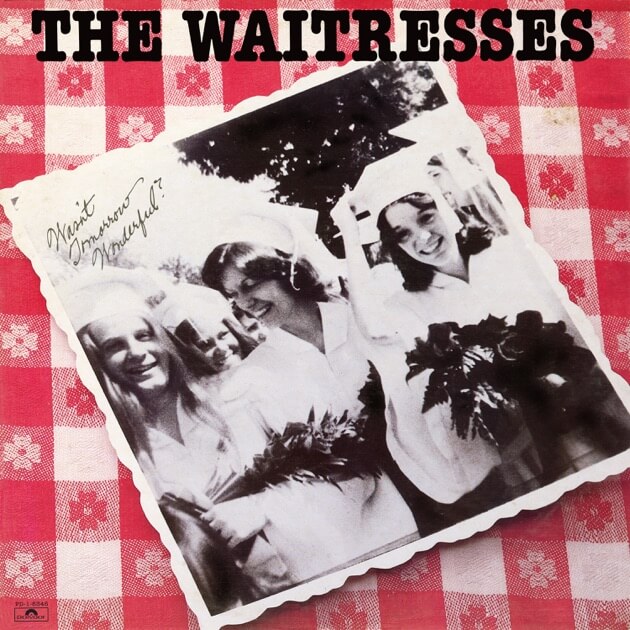 I wish there were more new wave Christmas songs in the world. Oh what a subgenre that could’ve been. Nonetheless, I think the Waitresses’ “Christmas Wrapping” is my favorite holiday song from that realm—it’s pure magic from beginning to end. Written by bandleader Chris Butler and sung by Patty Donahue, “Christmas Wrapping” gleans a bit of punk attitude, proto-hip-hop ideas, and jazzy horns. With Mars Williams on the sax and Dave Buck on trumpet, Butler on lead guitar, and the rhythm/percussion one-two punch of Tracy Wormworth and Billy Ficca, “Christmas Wrapping” is a ferocious, dashing, electrifying masterpiece that never gets old—with one of the most lyrical bass performances ever, to boot.
I wish there were more new wave Christmas songs in the world. Oh what a subgenre that could’ve been. Nonetheless, I think the Waitresses’ “Christmas Wrapping” is my favorite holiday song from that realm—it’s pure magic from beginning to end. Written by bandleader Chris Butler and sung by Patty Donahue, “Christmas Wrapping” gleans a bit of punk attitude, proto-hip-hop ideas, and jazzy horns. With Mars Williams on the sax and Dave Buck on trumpet, Butler on lead guitar, and the rhythm/percussion one-two punch of Tracy Wormworth and Billy Ficca, “Christmas Wrapping” is a ferocious, dashing, electrifying masterpiece that never gets old—with one of the most lyrical bass performances ever, to boot.
6. The Crystals: “Santa Claus Is Coming to Town”
 Realistically, most of Phil Spector’s A Christmas Gift For You could make up the Top 10 of this list. The Crystals’ “Santa Claus Is Coming to Town” is a personal favorite of mine, and maybe one of the more underrated parts of the record—largely because of how notorious “Sleigh Ride” and “Christmas (Baby Please Come Home)” have become in the 60 years since the LP’s release. This is one of the best pop songs I’ve ever heard, and the vocal chemistry of Dee Dee Kenniebew, Patsy Wright, Lala Brooks, and Barbara Alston is unbelievable. I understand why the Ronettes were Spector’s darlings, but it’s a shame that history doesn’t hold the Crystals as highly. On A Christmas Gift For You, they steal the whole show.
Realistically, most of Phil Spector’s A Christmas Gift For You could make up the Top 10 of this list. The Crystals’ “Santa Claus Is Coming to Town” is a personal favorite of mine, and maybe one of the more underrated parts of the record—largely because of how notorious “Sleigh Ride” and “Christmas (Baby Please Come Home)” have become in the 60 years since the LP’s release. This is one of the best pop songs I’ve ever heard, and the vocal chemistry of Dee Dee Kenniebew, Patsy Wright, Lala Brooks, and Barbara Alston is unbelievable. I understand why the Ronettes were Spector’s darlings, but it’s a shame that history doesn’t hold the Crystals as highly. On A Christmas Gift For You, they steal the whole show.
5. Joni Mitchell: “River”
 The best non-“Case of You” song from Joni Mitchell’s best album, “River” is the centerpiece of Blue and the greatest non-Christmas Christmas song ever written. Sung from the perspective of someone trying to move on from a recently-collapsed romance, Mitchell writes about post-relationship clarity with a fair bit of nuance. “I wish I had a river I could skate away on,” she sings. “I’m so hard to handle, I’m selfish, and I’m sad. Now, I’ve gone and lost the best baby that I ever had.” It’s a terribly devastating song that’s just Mitchell and her piano. But “River” is so powerful that you really don’t need anything more than her and her instrument. It’s the type of song I’d pull out if someone ever asked me to play them something perfect. From the Christmas keys at the jump to the euphoric finale of silence, “River” stands alone.
The best non-“Case of You” song from Joni Mitchell’s best album, “River” is the centerpiece of Blue and the greatest non-Christmas Christmas song ever written. Sung from the perspective of someone trying to move on from a recently-collapsed romance, Mitchell writes about post-relationship clarity with a fair bit of nuance. “I wish I had a river I could skate away on,” she sings. “I’m so hard to handle, I’m selfish, and I’m sad. Now, I’ve gone and lost the best baby that I ever had.” It’s a terribly devastating song that’s just Mitchell and her piano. But “River” is so powerful that you really don’t need anything more than her and her instrument. It’s the type of song I’d pull out if someone ever asked me to play them something perfect. From the Christmas keys at the jump to the euphoric finale of silence, “River” stands alone.
4. Low: “Just Like Christmas”
 The opening track from their 1999 EP Christmas, “Just Like Christmas” is a heavenly effort that prioritizes the weightless vocals of Mimi Parker. The lyrics aren’t complicated; the song capitalizes on the profundity of a trip from Sweden to Norway and the conversation about whether or not the blanketing snowfall (and its subsequent disappearance) conjures a noticable joy. “By the time we got to Oslo, the snow was gone,” Parker hums. “And we got lost, the bends were small. But we felt so young, it was just like Christmas.” With a bed of percussion and bells beneath her and Alan Sparhawk, “Just Like Christmas” embroiders Low’s slowcore tapestry with yarns of dream-pop. Perhaps it’s not the consensus pick among the masses, but so few Christmas songs fill me with as much wonder as “Just Like Christmas” does. Maybe I’m getting older, or maybe I’m just in love with the idea of something as simple as falling snow reminding me how to feel alive.
The opening track from their 1999 EP Christmas, “Just Like Christmas” is a heavenly effort that prioritizes the weightless vocals of Mimi Parker. The lyrics aren’t complicated; the song capitalizes on the profundity of a trip from Sweden to Norway and the conversation about whether or not the blanketing snowfall (and its subsequent disappearance) conjures a noticable joy. “By the time we got to Oslo, the snow was gone,” Parker hums. “And we got lost, the bends were small. But we felt so young, it was just like Christmas.” With a bed of percussion and bells beneath her and Alan Sparhawk, “Just Like Christmas” embroiders Low’s slowcore tapestry with yarns of dream-pop. Perhaps it’s not the consensus pick among the masses, but so few Christmas songs fill me with as much wonder as “Just Like Christmas” does. Maybe I’m getting older, or maybe I’m just in love with the idea of something as simple as falling snow reminding me how to feel alive.
3. Darlene Love: “Christmas (Baby Please Come Home)”

I think, if we’re talking about the greatest quintessential Christmas songs of all time, Darlene Love’s “Christmas (Baby Please Come Home)” takes the cake every single time. It’s a perfect soul song, and Love’s anthemic, larger-than-life lead vocal still puts me on the floor every time I hear it. I can listen to Christmas songs year-round, and “Christmas (Baby Please Come Home)” is always the first entry in rotation. With the Wrecking Crew behind her, Love performed what’s become the track that completely rewrote the book on Christmas music altogether. It’s beautiful, emotional, and jaw-dropping—solidifying Darlene Love’s place in the hallowed halls of pop greatness. And don’t sleep on Love’s other big contribution to Spector’s Christmas record, “White Christmas.” In my world, it went just as big.
2. The Pogues & Kirsty MacColl: “Fairytale of New York”
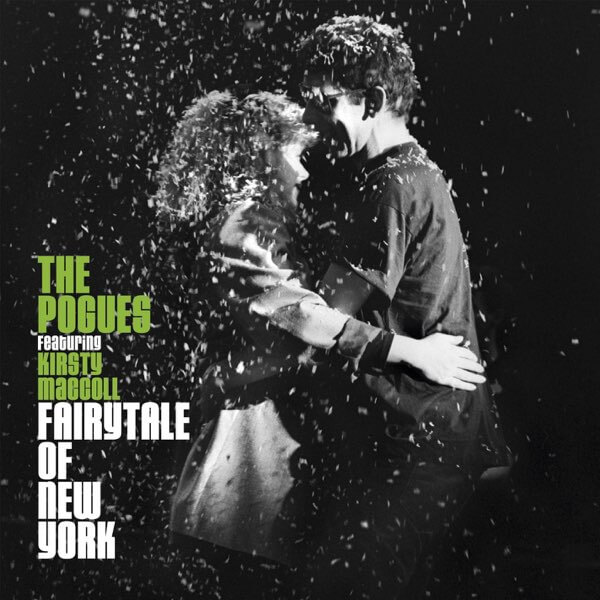 Released in 1987 by the Pogues, “Fairytale of New York” is a conversational, heartbreaking Celtic punk ballad that gets better every year. The story goes that Elvis Costello challenged Shane MacGowan to write a hit Christmas single—so, naturally, MacGowan went off and wrote a song that wasn’t just a #1 hit in Ireland, but the greatest holiday ballad of all time. The Pogues added singer-songwriter Kirsty MacColl on vocals, and “Fairytale of New York” quickly became the duet of the decade—two voices going back and forth about each other’s primes that have long passed. “You’re a bum, you’re a punk, you’re an old slut on junk,” MacColl and MacGowan sing back and forth. “Lying there almost dead on a drip in that bed, you scumbag, you maggot, you cheap lousy faggot. Happy Christmas, your arse, I pray to God it’s our last.” James Fearnley’s piano and string arrangements are especially beautiful here, and they lend a rather large amount of depth to a song that wrote the book on delicate anthems.
Released in 1987 by the Pogues, “Fairytale of New York” is a conversational, heartbreaking Celtic punk ballad that gets better every year. The story goes that Elvis Costello challenged Shane MacGowan to write a hit Christmas single—so, naturally, MacGowan went off and wrote a song that wasn’t just a #1 hit in Ireland, but the greatest holiday ballad of all time. The Pogues added singer-songwriter Kirsty MacColl on vocals, and “Fairytale of New York” quickly became the duet of the decade—two voices going back and forth about each other’s primes that have long passed. “You’re a bum, you’re a punk, you’re an old slut on junk,” MacColl and MacGowan sing back and forth. “Lying there almost dead on a drip in that bed, you scumbag, you maggot, you cheap lousy faggot. Happy Christmas, your arse, I pray to God it’s our last.” James Fearnley’s piano and string arrangements are especially beautiful here, and they lend a rather large amount of depth to a song that wrote the book on delicate anthems.
1. Tom Waits: “Christmas Card from a Hooker in Minneapolis”
 The first Tom Waits record I ever heard was Blue Valentine, and it’s a record I’ve worn out time and time again. The songs within are full of epic and wild perspectives. Lit cigarettes and barroom piano melodies that can take you anywhere. “Christmas Card from a Hooker in Minneapolis” is a 6-minute story—a letter from a prostitute to a man named Charlie, which Waits reads to us in full. He lets her entire life unfold on the page: she gets pregnant and quits drinking and drugging; her husband plays the trombone and agrees to raise the baby even though it’s not his; her record player got stolen so she can’t play that Imperials record Charlie bought her; everyone she knows is “either dead or in prison,” but she’s happy for the first time “since my accident.” “I wish I had all the money we used to spend on dope,” Waits croons, the words bubbling in his throat like syllables in acid. “I’d buy me a used car lot and I wouldn’t sell any of ‘em. I’d just drive a different car every day, dependin’ on how I feel.” But the heart of the song comes in its twist, when it’s revealed to Charlie that she doesn’t have a husband and simply needs a couple of bucks to pay for a lawyer. “Hey, I’ll be eligible for parole come Valentine’s Day,” she assures him, and you can hear the smirk wash over Waits’ face. “Christmas Card from a Hooker in Minneapolis” may not be a joyous symbol of the December yuletide. But the details make a bid for closeness or pity, depending on who you ask. It’s intimate but at a distance. Waits, certainly one of the best storytellers to spin a fable seven ways to Sunday, is at his best here. “Christmas Card from a Hooker in Minneapolis” is devastating even without the envelope.
The first Tom Waits record I ever heard was Blue Valentine, and it’s a record I’ve worn out time and time again. The songs within are full of epic and wild perspectives. Lit cigarettes and barroom piano melodies that can take you anywhere. “Christmas Card from a Hooker in Minneapolis” is a 6-minute story—a letter from a prostitute to a man named Charlie, which Waits reads to us in full. He lets her entire life unfold on the page: she gets pregnant and quits drinking and drugging; her husband plays the trombone and agrees to raise the baby even though it’s not his; her record player got stolen so she can’t play that Imperials record Charlie bought her; everyone she knows is “either dead or in prison,” but she’s happy for the first time “since my accident.” “I wish I had all the money we used to spend on dope,” Waits croons, the words bubbling in his throat like syllables in acid. “I’d buy me a used car lot and I wouldn’t sell any of ‘em. I’d just drive a different car every day, dependin’ on how I feel.” But the heart of the song comes in its twist, when it’s revealed to Charlie that she doesn’t have a husband and simply needs a couple of bucks to pay for a lawyer. “Hey, I’ll be eligible for parole come Valentine’s Day,” she assures him, and you can hear the smirk wash over Waits’ face. “Christmas Card from a Hooker in Minneapolis” may not be a joyous symbol of the December yuletide. But the details make a bid for closeness or pity, depending on who you ask. It’s intimate but at a distance. Waits, certainly one of the best storytellers to spin a fable seven ways to Sunday, is at his best here. “Christmas Card from a Hooker in Minneapolis” is devastating even without the envelope.

 Originally released as the B-side to “I Would Die 4 U” in 1984, “Another Lonely Christmas” is exactly what you’d expect from a Prince holiday song: sexy, reflective, tragic and cool as hell. “But of all your father’s children, all your father’s children, baby, you know,” Prince belts out. “You are the finest of them all, you are brighter than the Northern Star and I.” There’s an extended version of the song that includes a mammoth guitar solo from the Purple One, and it adds even more richness to an already head-banging, soulful holiday song that cries as much as it shouts.
Originally released as the B-side to “I Would Die 4 U” in 1984, “Another Lonely Christmas” is exactly what you’d expect from a Prince holiday song: sexy, reflective, tragic and cool as hell. “But of all your father’s children, all your father’s children, baby, you know,” Prince belts out. “You are the finest of them all, you are brighter than the Northern Star and I.” There’s an extended version of the song that includes a mammoth guitar solo from the Purple One, and it adds even more richness to an already head-banging, soulful holiday song that cries as much as it shouts. The Flaming Lips have made a few really great holiday songs, but “Christmas at the Zoo” is their best. What’s great about the track is that the title explains it all: Someone is at the zoo on Christmas Eve and wants to free all of the animals locked up, but none of the creatures really care. “I opened up the fence where the peacocks were, the lamas were unleashed, the snakes and seals could all get out, but they refused to leave,” Wayne Coyne muses, in a psychedelic, noisy rock affair punctuated by the Flaming Lips’ desire to make holiday music a bit gonzo.
The Flaming Lips have made a few really great holiday songs, but “Christmas at the Zoo” is their best. What’s great about the track is that the title explains it all: Someone is at the zoo on Christmas Eve and wants to free all of the animals locked up, but none of the creatures really care. “I opened up the fence where the peacocks were, the lamas were unleashed, the snakes and seals could all get out, but they refused to leave,” Wayne Coyne muses, in a psychedelic, noisy rock affair punctuated by the Flaming Lips’ desire to make holiday music a bit gonzo. Chicago soul singer Lou Rawls made quite a number of holiday tunes in his heyday, but none are as great as “Christmas Will Really Be Christmas”—a beautiful fusion of R&B, jazz, and blues, with Rawls’ bass-baritone vocal wrapping the instrumentation in silk curtains. You can hear the gospel influence in Rawls on the song, and “Christmas Will Really Be Christmas” has such a catchy and stirring bent to it. It’s a hopeful moment, as he channels the idea of world harmony and hope. “When people can live with each other, when peace on Earth has come to stay,” Rawls sings. “I said, ‘Christmas will really be Christmas’ with the whole world in a better way.”
Chicago soul singer Lou Rawls made quite a number of holiday tunes in his heyday, but none are as great as “Christmas Will Really Be Christmas”—a beautiful fusion of R&B, jazz, and blues, with Rawls’ bass-baritone vocal wrapping the instrumentation in silk curtains. You can hear the gospel influence in Rawls on the song, and “Christmas Will Really Be Christmas” has such a catchy and stirring bent to it. It’s a hopeful moment, as he channels the idea of world harmony and hope. “When people can live with each other, when peace on Earth has come to stay,” Rawls sings. “I said, ‘Christmas will really be Christmas’ with the whole world in a better way.”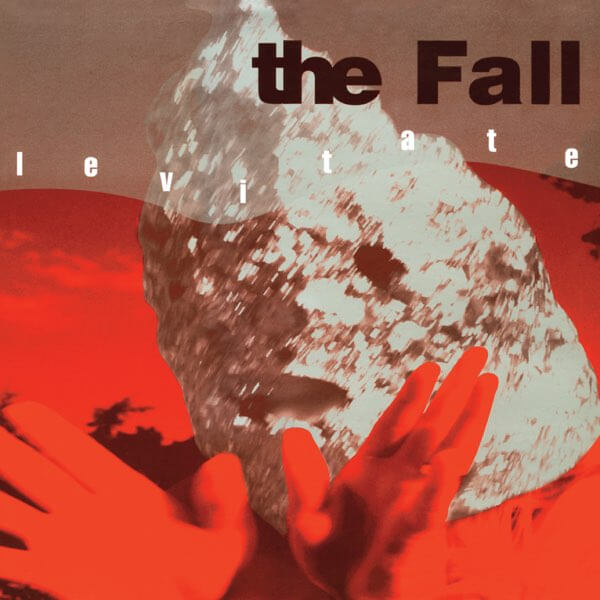 Of course the Fall would put a Christmas song on the oddest and most unpredictable album they ever released. “Christmastide” properly encapsulates Levitate, with its smattering of drum’n’bass breakbeats and queasy electronics. A brief woosh of “Deck the Halls” hits, sounding like it’s being played on a children’s toy. Mark E. Smith grovels and slurs his way through indescipherable lyrics about Jesus and animals. You can’t even fact-check his words on Google, because “Christmastide” arrives like a drunken keynote speech that’s written in cursive and being recited by Smith while he’s got one hand tied behind his back and the other clutching a too-full glass. The whole thing is a moody and ecstatic song where the rat prevails.
Of course the Fall would put a Christmas song on the oddest and most unpredictable album they ever released. “Christmastide” properly encapsulates Levitate, with its smattering of drum’n’bass breakbeats and queasy electronics. A brief woosh of “Deck the Halls” hits, sounding like it’s being played on a children’s toy. Mark E. Smith grovels and slurs his way through indescipherable lyrics about Jesus and animals. You can’t even fact-check his words on Google, because “Christmastide” arrives like a drunken keynote speech that’s written in cursive and being recited by Smith while he’s got one hand tied behind his back and the other clutching a too-full glass. The whole thing is a moody and ecstatic song where the rat prevails.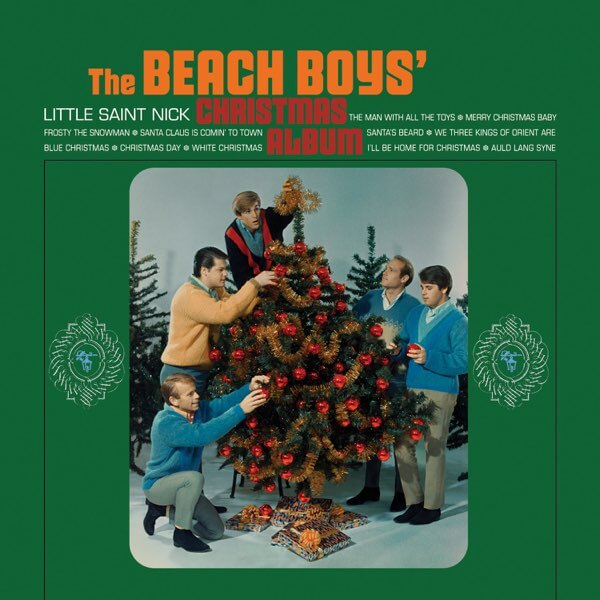 The Beach Boys and Christmas music? A blank check. The surf rock heroes’ choral instincts just make sense when merriment is involved. The Beach Boys recorded an entire Christmas album in 1964, but “Little Saint Nick” has always been the standout—because of its catchiness and because Brian Wilson and Mike Love co-wrote it together. It’s not just some recycling of an old standard, it’s one of the few pre-1970 entries on this list that was an original recording. It has the same rhythm and structure as “Little Deuce Coupe,” and Wilson was reportedly inspired to make the tune after hearing Phil Spector’s A Christmas Gift For You.
The Beach Boys and Christmas music? A blank check. The surf rock heroes’ choral instincts just make sense when merriment is involved. The Beach Boys recorded an entire Christmas album in 1964, but “Little Saint Nick” has always been the standout—because of its catchiness and because Brian Wilson and Mike Love co-wrote it together. It’s not just some recycling of an old standard, it’s one of the few pre-1970 entries on this list that was an original recording. It has the same rhythm and structure as “Little Deuce Coupe,” and Wilson was reportedly inspired to make the tune after hearing Phil Spector’s A Christmas Gift For You. Though it’s often overshadowed by “It’s Raining Men,” “Dear Santa” is absolutely a watershed moment for the Weather Girls, as Izora Armstead and Martha Wash deliver an anthem for the girls, gays, and everyone in-between who just want a good man to come home to. “I can almost feel him, feel his lips touching mine,” Armstead and Wash harmonize. “And darling, I reach out, reach out, reach out, reach out. I’ve been a good girl all year long, done my best, right or wrong.” What a tour de force of Christmas disco this song is—as catchy as it is timeless.
Though it’s often overshadowed by “It’s Raining Men,” “Dear Santa” is absolutely a watershed moment for the Weather Girls, as Izora Armstead and Martha Wash deliver an anthem for the girls, gays, and everyone in-between who just want a good man to come home to. “I can almost feel him, feel his lips touching mine,” Armstead and Wash harmonize. “And darling, I reach out, reach out, reach out, reach out. I’ve been a good girl all year long, done my best, right or wrong.” What a tour de force of Christmas disco this song is—as catchy as it is timeless. What a batshit song. I love it so much. By the time Thurston Moore screams himself inside out at the end of “Santa Doesn’t Cop Out on Dope,” Sonic Youth’s 1996 cover of a 1973 Martin Mull track, the noise is so suffocating you can’t think straight. It’s not a PSA but a reassurance: Santa Claus doesn’t do drugs. Moore hammers home the thesis: “Little kiddies, here’s my point: just leave him cookies and save your joint, ‘cause Santa Claus turns on it his own way, watching you and I turn on on Christmas day.” It’s Moore, Lee Ranaldo, and Kim Gordon splitting heads with feedback, and Steve Shelley sneaks in there with his xylophone, too. “Santa Doesn’t Cop out on Dope” makes for an overwhelming holiday chaser in the afterglow of 1995’s underrated Washing Machine.
What a batshit song. I love it so much. By the time Thurston Moore screams himself inside out at the end of “Santa Doesn’t Cop Out on Dope,” Sonic Youth’s 1996 cover of a 1973 Martin Mull track, the noise is so suffocating you can’t think straight. It’s not a PSA but a reassurance: Santa Claus doesn’t do drugs. Moore hammers home the thesis: “Little kiddies, here’s my point: just leave him cookies and save your joint, ‘cause Santa Claus turns on it his own way, watching you and I turn on on Christmas day.” It’s Moore, Lee Ranaldo, and Kim Gordon splitting heads with feedback, and Steve Shelley sneaks in there with his xylophone, too. “Santa Doesn’t Cop out on Dope” makes for an overwhelming holiday chaser in the afterglow of 1995’s underrated Washing Machine.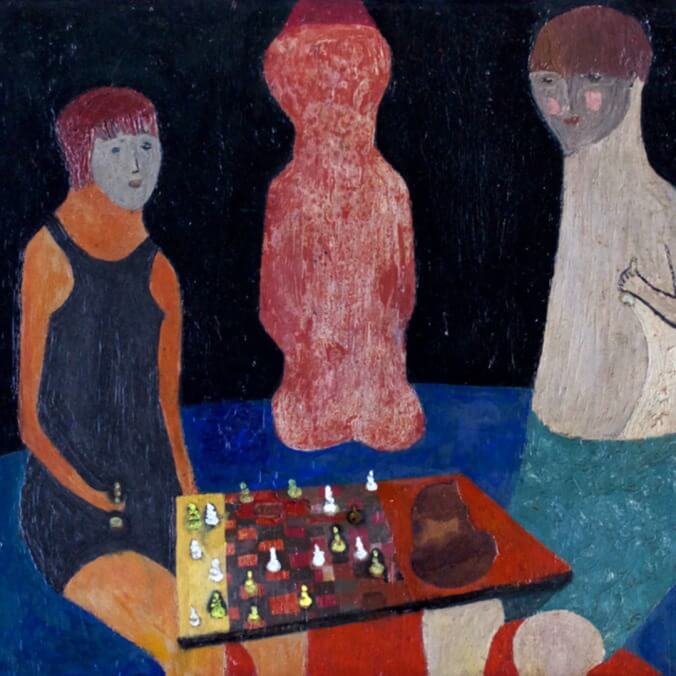 In 2023, I became captivated by Daneshevskaya’s music. Anna Beckerman’s debut album, Long is the Tunnel, was one of my favorite projects—thanks to her saccharine singing and impossibly magic melodies. Her work, to me, is like an orchestral nursery rhyme that is romantic in its briefness. “Scrooge” breathes in, out, and through stages of serenity—it’s buoyed by its own lightness; turned warm by a wash of soft strumming and aching strings. Beckerman wrote the song about “making someone a villain so that you can accept that they don’t want to be in your life anymore,” positing an old flame as an Ebenezer Scrooge kind of figure. “You know you walk just like a baby, and you leave just like a sneeze,” she sings. “When I turn around, there’s nothing to see.” I hear this and I want to weep, as the December lullaby of Daneshevskaya sets my yearning soul aglow.
In 2023, I became captivated by Daneshevskaya’s music. Anna Beckerman’s debut album, Long is the Tunnel, was one of my favorite projects—thanks to her saccharine singing and impossibly magic melodies. Her work, to me, is like an orchestral nursery rhyme that is romantic in its briefness. “Scrooge” breathes in, out, and through stages of serenity—it’s buoyed by its own lightness; turned warm by a wash of soft strumming and aching strings. Beckerman wrote the song about “making someone a villain so that you can accept that they don’t want to be in your life anymore,” positing an old flame as an Ebenezer Scrooge kind of figure. “You know you walk just like a baby, and you leave just like a sneeze,” she sings. “When I turn around, there’s nothing to see.” I hear this and I want to weep, as the December lullaby of Daneshevskaya sets my yearning soul aglow. Felix Gross bounced around in the ‘40s and ‘50s, writing and recording for Down Beat and Chess Records. His band featured Henry Coker, Maxwell Davis, Buddy Floyd, Tiny Webb, Joe Howard, and Minor Robinson, among a few other players. He perfected what I’m calling the “savory jazz” genre. “Love For Christmas” starts with jingle bells before turning into this sensual blues joint with the right amount of barroom stank. Hell, the song even evokes a type of blues music that you can hear so clearly ripped off in Elvis’ “Heartbreak Hotel.” But Gross does it better and he does it cooler. And that sax solo from Howard? Sheesh, man.
Felix Gross bounced around in the ‘40s and ‘50s, writing and recording for Down Beat and Chess Records. His band featured Henry Coker, Maxwell Davis, Buddy Floyd, Tiny Webb, Joe Howard, and Minor Robinson, among a few other players. He perfected what I’m calling the “savory jazz” genre. “Love For Christmas” starts with jingle bells before turning into this sensual blues joint with the right amount of barroom stank. Hell, the song even evokes a type of blues music that you can hear so clearly ripped off in Elvis’ “Heartbreak Hotel.” But Gross does it better and he does it cooler. And that sax solo from Howard? Sheesh, man. Oh, what finger-picked sugar “Souvenirs” is. It’s too bad the story doesn’t go down so sweetly. “Christmas days have come and gone, broken toys and faded colors are all that’s left to linger on,” John Prine sings over his guitar’s melody. It’s my favorite part of Diamonds in the Rough, if only for Prine’s sharp take on life’s most trivial sections. Days start and end. In the middle hours, we fill them with the priceless artifacts we’ve collected. Prine sums it up solemnly: “Memories, they can’t be boughten. They can’t be won at carnivals for free. Well, it took me years to get those souvenirs, and I don’t know how they slipped away from me.”
Oh, what finger-picked sugar “Souvenirs” is. It’s too bad the story doesn’t go down so sweetly. “Christmas days have come and gone, broken toys and faded colors are all that’s left to linger on,” John Prine sings over his guitar’s melody. It’s my favorite part of Diamonds in the Rough, if only for Prine’s sharp take on life’s most trivial sections. Days start and end. In the middle hours, we fill them with the priceless artifacts we’ve collected. Prine sums it up solemnly: “Memories, they can’t be boughten. They can’t be won at carnivals for free. Well, it took me years to get those souvenirs, and I don’t know how they slipped away from me.” A Christmas song so legendary there’s a yearly challenge centered around how long into the holiday season a person can go without hearing it, “Last Christmas” is the pop masterpiece we will likely spin forever. Wham! ruled the world in the mid-1980s, and “Last Christmas” was just another Top 5 hit in a long line of them during the duo’s time with CBS Records. Led by George Michael’s tantalizing, glitzy lead vocal, Wham! made one of the most contagious holiday songs of all time and, even in 2025, it still stands up—perhaps more than it ever has. While the song plugs in all of the poppy, catchy tropes that plagued much of the Reagan years, “Last Christmas” could get made today and still ring in just as brilliantly.
A Christmas song so legendary there’s a yearly challenge centered around how long into the holiday season a person can go without hearing it, “Last Christmas” is the pop masterpiece we will likely spin forever. Wham! ruled the world in the mid-1980s, and “Last Christmas” was just another Top 5 hit in a long line of them during the duo’s time with CBS Records. Led by George Michael’s tantalizing, glitzy lead vocal, Wham! made one of the most contagious holiday songs of all time and, even in 2025, it still stands up—perhaps more than it ever has. While the song plugs in all of the poppy, catchy tropes that plagued much of the Reagan years, “Last Christmas” could get made today and still ring in just as brilliantly. Go figure: the best garage rock band of all time made one of the best Christmas rock songs ever. On an LP featuring songs by the Fabulous Wailers and the Galaxies in 1965, “Santa Claus” is robust and bang-on. The vintage scruff and riffs don’t scream Christmastime, but Gerry Roslie’s lyrics certainly tell a yuletide tale of a gift wishlist and a dismissive Kris Kringle. “I want a brand new car, a twangy guitar, a cute little honey, and lots of money,” Roslie demands. “Santa Claus, won’t you tell me, please? Whatcha gonna put under my Christmas tree?” Crickets from the man in red. “Santa Claus” is a hoot and a ho-ho-ho, thrown by the best damn band around.
Go figure: the best garage rock band of all time made one of the best Christmas rock songs ever. On an LP featuring songs by the Fabulous Wailers and the Galaxies in 1965, “Santa Claus” is robust and bang-on. The vintage scruff and riffs don’t scream Christmastime, but Gerry Roslie’s lyrics certainly tell a yuletide tale of a gift wishlist and a dismissive Kris Kringle. “I want a brand new car, a twangy guitar, a cute little honey, and lots of money,” Roslie demands. “Santa Claus, won’t you tell me, please? Whatcha gonna put under my Christmas tree?” Crickets from the man in red. “Santa Claus” is a hoot and a ho-ho-ho, thrown by the best damn band around. The standout track from her 2016 EP Wonderland, “Driving Under Stars” is Marika Hackman’s dreamy winter prize. The Hampshire multi-instrumentalist is no stranger to guitar-driven music, but “Driving Under Stars” is just a mesmerizing slice of dream-pop vibrance. It’s an arresting song set on navigating life’s meaning. But, largely, it aims to better understand surroundings while flirting with being aimless. “Through the towns, all dressed up in stupid lights,” Hackman laments. “Window down, I’ll cut my cheekbones on the ice. It’s the time of the season, the cold is unforgiving. But the lamp light on the snowflakes, life is still worth livin’.” This song hits my rotation year-round, largely because it’s so accessible and brilliant. Sometimes I forget that it takes place during Christmastime.
The standout track from her 2016 EP Wonderland, “Driving Under Stars” is Marika Hackman’s dreamy winter prize. The Hampshire multi-instrumentalist is no stranger to guitar-driven music, but “Driving Under Stars” is just a mesmerizing slice of dream-pop vibrance. It’s an arresting song set on navigating life’s meaning. But, largely, it aims to better understand surroundings while flirting with being aimless. “Through the towns, all dressed up in stupid lights,” Hackman laments. “Window down, I’ll cut my cheekbones on the ice. It’s the time of the season, the cold is unforgiving. But the lamp light on the snowflakes, life is still worth livin’.” This song hits my rotation year-round, largely because it’s so accessible and brilliant. Sometimes I forget that it takes place during Christmastime. Openly queer punk band Pansy Division dropped an absolute heater back in the 1990s. And it was a huge moment for LGBTQ+ music across the board. The San Francisco quartet unloaded on Morrissey, having sex beneath the Christmas tree, and deserving cute boys instead of sweaters and socks. “Your family won’t give you encouragement, but let me give you sexual nourishment,” Jon Ginoli sings out. “Licking nipples, licking nuts, putting candy canes up each other’s butts. I wanna be your Christmas present, I wanna be your Christmas queer.” It was a barrier-obliterating moment for rock and roll, and “Homo Christmas” remains a fun listen 30 years later.
Openly queer punk band Pansy Division dropped an absolute heater back in the 1990s. And it was a huge moment for LGBTQ+ music across the board. The San Francisco quartet unloaded on Morrissey, having sex beneath the Christmas tree, and deserving cute boys instead of sweaters and socks. “Your family won’t give you encouragement, but let me give you sexual nourishment,” Jon Ginoli sings out. “Licking nipples, licking nuts, putting candy canes up each other’s butts. I wanna be your Christmas present, I wanna be your Christmas queer.” It was a barrier-obliterating moment for rock and roll, and “Homo Christmas” remains a fun listen 30 years later. The daughter of an Ohio radio station DJ, Harvie June Van has been one of my greatest finds in 2025. She released less than a dozen singles between 1954 and 1970, her best being “Dasher,” a country-pop ditty that flips the bird to old Rudolph. Harvie rewrites the narrative, posing Dasher as the true hero of Santa Claus’ nighttime rooftop escapades instead of that red-nosed hack: “Everywhere old Santa goes, he has the light to see. Dasher has his job to do before they hit each trail, following old Santa with this light up on his tail.”
The daughter of an Ohio radio station DJ, Harvie June Van has been one of my greatest finds in 2025. She released less than a dozen singles between 1954 and 1970, her best being “Dasher,” a country-pop ditty that flips the bird to old Rudolph. Harvie rewrites the narrative, posing Dasher as the true hero of Santa Claus’ nighttime rooftop escapades instead of that red-nosed hack: “Everywhere old Santa goes, he has the light to see. Dasher has his job to do before they hit each trail, following old Santa with this light up on his tail.” There are quite a few Christmas songs to pull out of Sufjan Stevens’ catalog—his album Songs for Christmas alone is 42 tracks long and its successor, Silver & Gold, contains another 58. When push comes to shove, I think “That Was the Worst Christmas Ever!” takes the top prize, though “Joy to the World” would be a good alternative. Sufjan is one of our best modern songwriters across the board; it’s no surprise that his work in the holiday music field is stellar, too. “That Was the Worst Christmas Ever!” is one of the chapters on Songs for Christmas that Sufjan wrote himself, and it stands far above the traditional tracks sprinkled around it.
There are quite a few Christmas songs to pull out of Sufjan Stevens’ catalog—his album Songs for Christmas alone is 42 tracks long and its successor, Silver & Gold, contains another 58. When push comes to shove, I think “That Was the Worst Christmas Ever!” takes the top prize, though “Joy to the World” would be a good alternative. Sufjan is one of our best modern songwriters across the board; it’s no surprise that his work in the holiday music field is stellar, too. “That Was the Worst Christmas Ever!” is one of the chapters on Songs for Christmas that Sufjan wrote himself, and it stands far above the traditional tracks sprinkled around it. A massive ballad from their third album Learning to Crawl, “2000 Miles” is a shining moment for Chrissie Hynde and the Pretenders. It’s not the brightest of stories, as Hynde writes about a long-distance relationship and two lovers spending Christmas apart. “In these frozen and silent nights, sometimes in a dream you appear outside the purple sky,” she sings. “Diamonds in the snow sparkle, our hearts were singing.” Not only is it a heartbreaking and painfully familiar narrative, “2000 Miles” is one of Hynde’s greatest tunes—and it’s one of the best Pretenders songs ever.
A massive ballad from their third album Learning to Crawl, “2000 Miles” is a shining moment for Chrissie Hynde and the Pretenders. It’s not the brightest of stories, as Hynde writes about a long-distance relationship and two lovers spending Christmas apart. “In these frozen and silent nights, sometimes in a dream you appear outside the purple sky,” she sings. “Diamonds in the snow sparkle, our hearts were singing.” Not only is it a heartbreaking and painfully familiar narrative, “2000 Miles” is one of Hynde’s greatest tunes—and it’s one of the best Pretenders songs ever. I’ll fight to the death for the mid-century, rock and roll Christmas songs. I have nearly gone to war over Paul McCartney’s “Wonderful Christmastime.” Perhaps if anyone comes for me in the QRTs on X, I will need to emblazon a “Support the Troops” bumper sticker on my car for all of the work I’ve done to outmuscle the naysayers. Don’t speak ill of Elton John’s “Step Into Christmas”; it’s the catchiest holiday rock song ever made. I’ll listen to it in the middle of the summer, I don’t care—inject that chorus into my veins. I implore you to let the soft animal of your musical taste want what it wants. Give in to the temptation of “Step Into Christmas. If you needed more reason as to why 1973 was Elton’s greatest year, look no further than here. It’s one of the slickest, coolest jams that our beloved English rock thespian has ever translated on-stage from Bernie Taupin’s lyrical musings.
I’ll fight to the death for the mid-century, rock and roll Christmas songs. I have nearly gone to war over Paul McCartney’s “Wonderful Christmastime.” Perhaps if anyone comes for me in the QRTs on X, I will need to emblazon a “Support the Troops” bumper sticker on my car for all of the work I’ve done to outmuscle the naysayers. Don’t speak ill of Elton John’s “Step Into Christmas”; it’s the catchiest holiday rock song ever made. I’ll listen to it in the middle of the summer, I don’t care—inject that chorus into my veins. I implore you to let the soft animal of your musical taste want what it wants. Give in to the temptation of “Step Into Christmas. If you needed more reason as to why 1973 was Elton’s greatest year, look no further than here. It’s one of the slickest, coolest jams that our beloved English rock thespian has ever translated on-stage from Bernie Taupin’s lyrical musings. Willie Nelson wrote “Pretty Paper” and recorded a great version of it in 1964 with Jerry Reed, Pete Drake, and Chet Atkins, but it’s the Roy Orbison version from a year earlier that I return to most. The song’s about a man selling pencils and paper on the streets during Christmastime, inspired by Nelson remembering an amputee in Fort Worth who sold pencils and paper in front of a department store. Orbison and producer Fred Foster recorded the song at Decca Studios in London in ‘63 when Orbison was battling a 102-degree fever. “Pretty Paper” took 12 takes to complete, but what we got was a song swinging between country music and a big orchestra pocket. Orbison’s voice, dependable forever, soothes every note.
Willie Nelson wrote “Pretty Paper” and recorded a great version of it in 1964 with Jerry Reed, Pete Drake, and Chet Atkins, but it’s the Roy Orbison version from a year earlier that I return to most. The song’s about a man selling pencils and paper on the streets during Christmastime, inspired by Nelson remembering an amputee in Fort Worth who sold pencils and paper in front of a department store. Orbison and producer Fred Foster recorded the song at Decca Studios in London in ‘63 when Orbison was battling a 102-degree fever. “Pretty Paper” took 12 takes to complete, but what we got was a song swinging between country music and a big orchestra pocket. Orbison’s voice, dependable forever, soothes every note. Many thanks to the great Numero Group for reissuing the Soul Duo’s 1968 single “Just a Sad Xmas.” Ida Sands and Joe Webster only recorded two songs for Shiptown, but they’re both yuletide zingers. The two singers belt all the way through “Just a Sad Xmas,” reaching for a Christmas “as bright as the stars, baby, as white as the snow.” Loneliness prevails and a guitar begins to undress around Sands and Webster. An organ pushes the Soul Duo even closer to the brink, and together they let go: “It’s just a sad, sad Christmasssss.” Magnetic.
Many thanks to the great Numero Group for reissuing the Soul Duo’s 1968 single “Just a Sad Xmas.” Ida Sands and Joe Webster only recorded two songs for Shiptown, but they’re both yuletide zingers. The two singers belt all the way through “Just a Sad Xmas,” reaching for a Christmas “as bright as the stars, baby, as white as the snow.” Loneliness prevails and a guitar begins to undress around Sands and Webster. An organ pushes the Soul Duo even closer to the brink, and together they let go: “It’s just a sad, sad Christmasssss.” Magnetic. At first, the “Merry Christmas, Please Don’t Call” melody suggests a The National impression, and Jack Antonoff certainly does sound like he’s channeling Matt Berninger a bit here and there, but once the synths kick into full gear, there’s no stopping how catchy the song is. Antonoff, in a submerged and slowed-down baritone, croons through swirls of reverb and piles of electronics until Evan Smith’s saxophone cuts through the twinkling wisps. The way Antonoff sings “and the toughest part is that we both know what happened to you, why you’re out on your own” was among my favorite vocal stims of 2024, as he curls his voice into a tone I can only describe as “New Jersey twang.” “Merry Christmas, Please Don’t Call” is Bleachers at their tightest and Jack Antonoff at his most compelling.
At first, the “Merry Christmas, Please Don’t Call” melody suggests a The National impression, and Jack Antonoff certainly does sound like he’s channeling Matt Berninger a bit here and there, but once the synths kick into full gear, there’s no stopping how catchy the song is. Antonoff, in a submerged and slowed-down baritone, croons through swirls of reverb and piles of electronics until Evan Smith’s saxophone cuts through the twinkling wisps. The way Antonoff sings “and the toughest part is that we both know what happened to you, why you’re out on your own” was among my favorite vocal stims of 2024, as he curls his voice into a tone I can only describe as “New Jersey twang.” “Merry Christmas, Please Don’t Call” is Bleachers at their tightest and Jack Antonoff at his most compelling. Buck Owens had 21 #1 hits on the country music charts, so he’s hardly an obscurity. But I can’t think of that many Christmas song lists with “All I Want For Christmas, Dear, Is You” on them—which is a shame, because he and the Buckaroos sound positively splendid and weepy on the tune. Tucked behind an instrumental rendition of “Jingle Bells,” “All I Want For Christmas, Dear, Is You” aches in touches of pedal steel, fiddle, and shuffling drums. Owens sings about a long-distance lover whose absence has left him alone on the 25th. “Presents wrapped in green and gold have no arms for me to hold,” he croons, “no lips to whisper softly, ‘I love you.’”
Buck Owens had 21 #1 hits on the country music charts, so he’s hardly an obscurity. But I can’t think of that many Christmas song lists with “All I Want For Christmas, Dear, Is You” on them—which is a shame, because he and the Buckaroos sound positively splendid and weepy on the tune. Tucked behind an instrumental rendition of “Jingle Bells,” “All I Want For Christmas, Dear, Is You” aches in touches of pedal steel, fiddle, and shuffling drums. Owens sings about a long-distance lover whose absence has left him alone on the 25th. “Presents wrapped in green and gold have no arms for me to hold,” he croons, “no lips to whisper softly, ‘I love you.’” “Greeting cards have all been sent, the Christmas rush is through” is one of the most recognizable holiday song intros of the last half-century. “Merry Christmas, Darling” is one of the Carpenters’ best tunes ever, and Karen’s vocals are particularly stunning on it. She also does her own backing vocals, along with Richard—who plays piano, celesta, and Wurlitzer, too. But it’s Bob Messenger’s tenor sax solo that pierces through the wall of voices and turns the track into the orchestral, heavenly masterpiece it continues to be.
“Greeting cards have all been sent, the Christmas rush is through” is one of the most recognizable holiday song intros of the last half-century. “Merry Christmas, Darling” is one of the Carpenters’ best tunes ever, and Karen’s vocals are particularly stunning on it. She also does her own backing vocals, along with Richard—who plays piano, celesta, and Wurlitzer, too. But it’s Bob Messenger’s tenor sax solo that pierces through the wall of voices and turns the track into the orchestral, heavenly masterpiece it continues to be. Released by Kate Bush as a single but scrubbed from streaming services, “December Will Be Magic Again” is a powerhouse track that rivaled any Christmas music that came out post-Spector’s A Christmas Gift For You. It’s a nuanced take on the joyous potential of the holiday season, as Bush sings about Bing Crosby, Saint Nick, Oscar Wilde, and mistletoe. “I want to hear your laugh, don’t let the mystery go now,” she confesses over a whimsical and mythical arrangement that, in a perfect world, exists outside of the caverns of
Released by Kate Bush as a single but scrubbed from streaming services, “December Will Be Magic Again” is a powerhouse track that rivaled any Christmas music that came out post-Spector’s A Christmas Gift For You. It’s a nuanced take on the joyous potential of the holiday season, as Bush sings about Bing Crosby, Saint Nick, Oscar Wilde, and mistletoe. “I want to hear your laugh, don’t let the mystery go now,” she confesses over a whimsical and mythical arrangement that, in a perfect world, exists outside of the caverns of  Not to be confused with the Felix Gross song mentioned a few entries earlier, this “Love for Christmas” is a girl-group pop treasure from the Chicago-born Gems, courtesy of Chess Records. It’s one of those tunes you hear once and want to hear again and again and again. If I could add any song into the holiday radio pantheon, I’m submitting this Gems joint. When the girls harmonize on “we’ll have the merriest, merriest Christmas of all time, no, no, no,” I get a few goosebumps. It sounds so good, and the brass backing erupts incredibly throughout. The Gems didn’t get enough love when they were around, but you might recognize those lead vocals. That’s a then-unknown, teen-aged Minnie Riperton (performing under the name Andrea Davis) singing. What a small world until “Love for Christmas” makes it grow a few sizes.
Not to be confused with the Felix Gross song mentioned a few entries earlier, this “Love for Christmas” is a girl-group pop treasure from the Chicago-born Gems, courtesy of Chess Records. It’s one of those tunes you hear once and want to hear again and again and again. If I could add any song into the holiday radio pantheon, I’m submitting this Gems joint. When the girls harmonize on “we’ll have the merriest, merriest Christmas of all time, no, no, no,” I get a few goosebumps. It sounds so good, and the brass backing erupts incredibly throughout. The Gems didn’t get enough love when they were around, but you might recognize those lead vocals. That’s a then-unknown, teen-aged Minnie Riperton (performing under the name Andrea Davis) singing. What a small world until “Love for Christmas” makes it grow a few sizes. Recorded by Scottish rock band Frightened Rabbit in 2007, “It’s Christmas So We’ll Stop” is a song that details how, during the holiday season, we can put our differences aside and look for hope together. It’s a songwriting highpoint from bandleader Scott Hutchison, as he mines for some type of meaning in a gesture of holiday unity. “Let the rot stop just for one day,” he sings. “Only good red eyes, red suits, and faces will radiate. And the cold will hide its face, now the cold has turned away. We can be best friends with the people we hate, ‘cause we’ve all got blood and it’s warmer than you’d think.” In this world—which Hutchison so painfully constructs for us—we are hanging onto memories, remembering loved ones we’ve lost, and, the next day, going back to our old selves.
Recorded by Scottish rock band Frightened Rabbit in 2007, “It’s Christmas So We’ll Stop” is a song that details how, during the holiday season, we can put our differences aside and look for hope together. It’s a songwriting highpoint from bandleader Scott Hutchison, as he mines for some type of meaning in a gesture of holiday unity. “Let the rot stop just for one day,” he sings. “Only good red eyes, red suits, and faces will radiate. And the cold will hide its face, now the cold has turned away. We can be best friends with the people we hate, ‘cause we’ve all got blood and it’s warmer than you’d think.” In this world—which Hutchison so painfully constructs for us—we are hanging onto memories, remembering loved ones we’ve lost, and, the next day, going back to our old selves. If you don’t like “Wonderful Christmastime,” grow up. All of these anti-“Wonderful Christmastime” takes are getting old. Just admit the truth: Paul McCartney wrote one of the most addictive holiday melodies of all time. And he did it all by himself! McCartney played keys, synths, guitar, bass, drums, percussion, and jingle bells—and he produced the track. I feel no animosity towards anyone who doesn’t like this song, but I also don’t respect your choice. Only someone who has a firm grasp on pop songcraft can make something sound so simplistic yet practically irreplicable. “Wonderful Christmastime” is the gift that keeps on giving, and I’d like a six-hour loop of it pronto—the uncut version practically carries on for that long anyhow.
If you don’t like “Wonderful Christmastime,” grow up. All of these anti-“Wonderful Christmastime” takes are getting old. Just admit the truth: Paul McCartney wrote one of the most addictive holiday melodies of all time. And he did it all by himself! McCartney played keys, synths, guitar, bass, drums, percussion, and jingle bells—and he produced the track. I feel no animosity towards anyone who doesn’t like this song, but I also don’t respect your choice. Only someone who has a firm grasp on pop songcraft can make something sound so simplistic yet practically irreplicable. “Wonderful Christmastime” is the gift that keeps on giving, and I’d like a six-hour loop of it pronto—the uncut version practically carries on for that long anyhow. “White Christmas,” written by Irving Berlin for the 1942 film Holiday Inn, has been covered by everyone from Michael Bublé and the Glee Cast to Meghan Trainor and Bette Midler. The Bing Crosby rendition is the most famous, and no one is disputing that. But it’s not the best. No, that designation belongs to the Drifters, who boasted the singing talents of lead vocalist Clyde McPhatter and their bass vocalist Bill Pinkey in 1954. The track would peak at #2 on the Billboard R&B chart. Because of radio segregation at the time, “White Christmas” was mostly popular in the Black community. Its use in films like Home Alone and The Santa Clause helped it find larger audiences later on, and now it exists as one of the greatest doo-wop Christmas songs ever.
“White Christmas,” written by Irving Berlin for the 1942 film Holiday Inn, has been covered by everyone from Michael Bublé and the Glee Cast to Meghan Trainor and Bette Midler. The Bing Crosby rendition is the most famous, and no one is disputing that. But it’s not the best. No, that designation belongs to the Drifters, who boasted the singing talents of lead vocalist Clyde McPhatter and their bass vocalist Bill Pinkey in 1954. The track would peak at #2 on the Billboard R&B chart. Because of radio segregation at the time, “White Christmas” was mostly popular in the Black community. Its use in films like Home Alone and The Santa Clause helped it find larger audiences later on, and now it exists as one of the greatest doo-wop Christmas songs ever. From her 1966 album of the same name, “Country Christmas” is an unbelievably perfect country song about hanging out with loved ones and having a great time doing so. “With all the family gathered ‘round our pretty Christmas tree, we’ll open up our presents Christmas Eve about midnight,” Lynn sings. “We’ll have a good old country Christmas all right.” Though the album is filled with traditional tracks like “White Christmas,” “Santa Claus Is Coming to Town,” and “Silver Bells,” Lynn herself wrote “Country Christmas” and it’s the immediate standout. Lynn always had a magical lilt in her voice, and it’s that charm that shines from end to end here.
From her 1966 album of the same name, “Country Christmas” is an unbelievably perfect country song about hanging out with loved ones and having a great time doing so. “With all the family gathered ‘round our pretty Christmas tree, we’ll open up our presents Christmas Eve about midnight,” Lynn sings. “We’ll have a good old country Christmas all right.” Though the album is filled with traditional tracks like “White Christmas,” “Santa Claus Is Coming to Town,” and “Silver Bells,” Lynn herself wrote “Country Christmas” and it’s the immediate standout. Lynn always had a magical lilt in her voice, and it’s that charm that shines from end to end here. “Merry Christmas Baby,” an R&B standard filed by Lou Baxter and Johnny Moore back in 1947, has been covered by all the greats: Chuck Berry, James Brown, Ike & Tina Turner, Elvis, Springsteen, B.B. King. But no version is quite as terrific as Otis Redding’s, which he recorded only nine days before his death in December 1967. Though it wound up a B-side to “White Christmas,” it’s still quintessential Otis—a voice worth a couple million ensconced in a horn arrangement that won’t quit. “Merry Christmas Baby” is one of the coolest songs ever recorded because Otis and producer Steve Cropper got their hands on it. When the King of Soul hits that note on “I feel like I’m in paradise,” I go there, too.
“Merry Christmas Baby,” an R&B standard filed by Lou Baxter and Johnny Moore back in 1947, has been covered by all the greats: Chuck Berry, James Brown, Ike & Tina Turner, Elvis, Springsteen, B.B. King. But no version is quite as terrific as Otis Redding’s, which he recorded only nine days before his death in December 1967. Though it wound up a B-side to “White Christmas,” it’s still quintessential Otis—a voice worth a couple million ensconced in a horn arrangement that won’t quit. “Merry Christmas Baby” is one of the coolest songs ever recorded because Otis and producer Steve Cropper got their hands on it. When the King of Soul hits that note on “I feel like I’m in paradise,” I go there, too. Stevie Wonder has made a lot of good Christmas tunes. I mean, “Someday at Christmas” alone is an all-timer. But, I do sincerely think that “What Christmas Means to Me” is much, much better—just a firestorm of catchiness. Performed in 1967, Motown writer Anna Gaye was the primary composer and, without a doubt, turned in an all-time classic holiday hit. Punctuated by Wonder’s generational voice, charisma, and harmonica-playing—instrumentation from always-dependable Funk Brothers in tow—“What Christmas Means to Me” stands alone.
Stevie Wonder has made a lot of good Christmas tunes. I mean, “Someday at Christmas” alone is an all-timer. But, I do sincerely think that “What Christmas Means to Me” is much, much better—just a firestorm of catchiness. Performed in 1967, Motown writer Anna Gaye was the primary composer and, without a doubt, turned in an all-time classic holiday hit. Punctuated by Wonder’s generational voice, charisma, and harmonica-playing—instrumentation from always-dependable Funk Brothers in tow—“What Christmas Means to Me” stands alone. You may not know Don McGinnis’ name, but “I’ll be Home For Christmas” is unforgettable once you’ve heard it. The 1968 country song is virtually unheard of by now, but to me it serves as a great reminder of how fantastic that era and genre’s holiday music was. Nostalgic imagery is potent in McGinnis’ hands, as he recalls church bells ringing “peace on Earth” and a happy heart singing, “I remember the home of my childhood and the fields are white with snow, and the candles on the Christmas tree that burn with a soft, warm glow.”
You may not know Don McGinnis’ name, but “I’ll be Home For Christmas” is unforgettable once you’ve heard it. The 1968 country song is virtually unheard of by now, but to me it serves as a great reminder of how fantastic that era and genre’s holiday music was. Nostalgic imagery is potent in McGinnis’ hands, as he recalls church bells ringing “peace on Earth” and a happy heart singing, “I remember the home of my childhood and the fields are white with snow, and the candles on the Christmas tree that burn with a soft, warm glow.” I am not one of prog-rock’s loyal soldiers, unfortunately. I dig it, don’t get me wrong, but my passions lay elsewhere. That being said, I heard “I Believe in Father Christmas” and have been hung up on it ever since. Greg Lake wrote it in 1974 in protest of holiday commercialization. Many have interpreted it as an anti-religous song. Me? I agree with the former. Lake draws on the promise of a merry dream and the way it breaks. “They sold me a silent night,” he sings. “They sold me a fairy story, that I believed in the yuletide.” His ideas turn to hope and bravery, to “a yawn in the first light of dawn.” Backed by a folk symphony and the “Troika” portion of Sergei Prokofiev’s Lieutenant Kijé Suite, Lake delivers to us a firm but picturesque destination: “The Christmas you get, you deserve.”
I am not one of prog-rock’s loyal soldiers, unfortunately. I dig it, don’t get me wrong, but my passions lay elsewhere. That being said, I heard “I Believe in Father Christmas” and have been hung up on it ever since. Greg Lake wrote it in 1974 in protest of holiday commercialization. Many have interpreted it as an anti-religous song. Me? I agree with the former. Lake draws on the promise of a merry dream and the way it breaks. “They sold me a silent night,” he sings. “They sold me a fairy story, that I believed in the yuletide.” His ideas turn to hope and bravery, to “a yawn in the first light of dawn.” Backed by a folk symphony and the “Troika” portion of Sergei Prokofiev’s Lieutenant Kijé Suite, Lake delivers to us a firm but picturesque destination: “The Christmas you get, you deserve.” The opening track from his 1973 album Paris 1919, John Cale’s“Child’s Christmas in Wales” was inspired by the Dylan Thomas poem of the same name. It’s a beautiful slice of baroque pop, and the greatest art pop holiday song ever written—a tune so good that it ought to be played year-round. “Then wearily, the footsteps worked the hallelujah crowds,” Cale sings out. “Too late but wait the long-legged bait, tripped uselessly around Sebastopol Adrianopolis.” It’s poetic and marvelous, as Cale channels orchestral arrangements and contemporary pop chart stylings. All of Paris 1919 is brilliant, but “Child’s Christmas in Wales” exists in a pantheon of its own.
The opening track from his 1973 album Paris 1919, John Cale’s“Child’s Christmas in Wales” was inspired by the Dylan Thomas poem of the same name. It’s a beautiful slice of baroque pop, and the greatest art pop holiday song ever written—a tune so good that it ought to be played year-round. “Then wearily, the footsteps worked the hallelujah crowds,” Cale sings out. “Too late but wait the long-legged bait, tripped uselessly around Sebastopol Adrianopolis.” It’s poetic and marvelous, as Cale channels orchestral arrangements and contemporary pop chart stylings. All of Paris 1919 is brilliant, but “Child’s Christmas in Wales” exists in a pantheon of its own. Texas blues picker Lightnin’ Hopkins sang a few holiday numbers in his day, including “Happy New Year,” which is a favorite of mine. But this is a Christmas list, and “Santa” belongs here. Pulled from the back-end of his 1962 LP Mojo Hand, Hopkins’ blues pedigree gets some R&B accompaniment. But the commercial flavor is stripped back on “Santa,” a tall tale about Santa Claus begging for charity on the New York City streets. But Santa takes care of God’s saintly children, Hopkins’ reckons. Suddenly, it’s all a folktale, told by Hopkins and the voice of his rattling guitar: “Mother said, ‘A million year ago Santa Claus come to me, now this year he gon’ come to you.’”
Texas blues picker Lightnin’ Hopkins sang a few holiday numbers in his day, including “Happy New Year,” which is a favorite of mine. But this is a Christmas list, and “Santa” belongs here. Pulled from the back-end of his 1962 LP Mojo Hand, Hopkins’ blues pedigree gets some R&B accompaniment. But the commercial flavor is stripped back on “Santa,” a tall tale about Santa Claus begging for charity on the New York City streets. But Santa takes care of God’s saintly children, Hopkins’ reckons. Suddenly, it’s all a folktale, told by Hopkins and the voice of his rattling guitar: “Mother said, ‘A million year ago Santa Claus come to me, now this year he gon’ come to you.’” Released on A Soulful Christmas in 1968, “Santa Claus Go Straight to the Ghetto” is a masterclass in funk holiday music proctored by the Godfather of Soul himself. “Fill every stocking you find, the kids are gonna love you so,” Brown sings. “Leave a toy for Johnny, leave a doll for Mary, leave something pretty for Donnie, and don’t forget about Gary.” It’s a Christmas song that came out when radio segregation was very much still ongoing, so it remains largely absent from contemporary holiday playlists. But it’s a brilliant funk tune that soothes without ever kicking up too much of a fuss. Tell your local station to play this one loud, and tell them James Brown sent you!
Released on A Soulful Christmas in 1968, “Santa Claus Go Straight to the Ghetto” is a masterclass in funk holiday music proctored by the Godfather of Soul himself. “Fill every stocking you find, the kids are gonna love you so,” Brown sings. “Leave a toy for Johnny, leave a doll for Mary, leave something pretty for Donnie, and don’t forget about Gary.” It’s a Christmas song that came out when radio segregation was very much still ongoing, so it remains largely absent from contemporary holiday playlists. But it’s a brilliant funk tune that soothes without ever kicking up too much of a fuss. Tell your local station to play this one loud, and tell them James Brown sent you! There is nothing more beautiful than putting your A Charlie Brown Christmas vinyl on and letting the winter night drift away. Is any group more synonymous with Christmas than the Vince Guaraldi Trio? “O Tannenbaum” would have been a fair choice here too, but the vocal version of “Christmas Time Is Here” is unlike anything else I’ve ever encountered. It’s beautiful, innocent, and stirring, as Guaraldi’s piano-playing is a special sound to behold. The backing percussion nearly sounds like a crackling record, as if we have always been meant to hear the song years after it was performed. Though it was written for a Peanuts special, “Christmas Time Is Here” somehow feels untethered to any particular source material. It’s for everyone, whether you’ve watched A Charlie Brown Christmas or not. That’s real magic right there.
There is nothing more beautiful than putting your A Charlie Brown Christmas vinyl on and letting the winter night drift away. Is any group more synonymous with Christmas than the Vince Guaraldi Trio? “O Tannenbaum” would have been a fair choice here too, but the vocal version of “Christmas Time Is Here” is unlike anything else I’ve ever encountered. It’s beautiful, innocent, and stirring, as Guaraldi’s piano-playing is a special sound to behold. The backing percussion nearly sounds like a crackling record, as if we have always been meant to hear the song years after it was performed. Though it was written for a Peanuts special, “Christmas Time Is Here” somehow feels untethered to any particular source material. It’s for everyone, whether you’ve watched A Charlie Brown Christmas or not. That’s real magic right there. The Cocteau Twins’ entire Snow EP is immaculate, but “Frosty the Snowman” is the star of the show. Elizabeth Fraser’s lead vocals are legible and awing, and Robin Guthrie and Simon Raymonde fill in the instrumental gaps perfectly. There’s a reason why the trio were the greatest dream-pop group to ever do it, and the fact that they could completely rewrite the book on a holiday staple like “Frosty the Snowman” is not a mark of how malleable the song is so much as it’s a direct example of just how great the Cocteau Twins were. It’s a performance that, while it was recorded in December 1993, feels futuristic even now, 32 years later.
The Cocteau Twins’ entire Snow EP is immaculate, but “Frosty the Snowman” is the star of the show. Elizabeth Fraser’s lead vocals are legible and awing, and Robin Guthrie and Simon Raymonde fill in the instrumental gaps perfectly. There’s a reason why the trio were the greatest dream-pop group to ever do it, and the fact that they could completely rewrite the book on a holiday staple like “Frosty the Snowman” is not a mark of how malleable the song is so much as it’s a direct example of just how great the Cocteau Twins were. It’s a performance that, while it was recorded in December 1993, feels futuristic even now, 32 years later. Not all Christmas songs are meant to be happy, nor do they need to be explicitly labeled. Counting Crows turned their sorrow into a triumph on “A Long December,” and Adam Duritz’s lament of Hollywood loneliness and romantic dissolution is still painfully familiar, especially when he sings “Maybe this year will be better than the last, I can’t remember all the times I tried to tell myself to hold on to these moments as they pass.” Once David Bryson lays into that guitar solo two minutes in, it’s quite clear that “A Long December” is one of the best holiday rock songs of all time. But when Charlie Gillingham’s accordion kicks into high-gear, there’s no going back. You’re neck-deep in immortality. And it’s only one more day up in the canyon.
Not all Christmas songs are meant to be happy, nor do they need to be explicitly labeled. Counting Crows turned their sorrow into a triumph on “A Long December,” and Adam Duritz’s lament of Hollywood loneliness and romantic dissolution is still painfully familiar, especially when he sings “Maybe this year will be better than the last, I can’t remember all the times I tried to tell myself to hold on to these moments as they pass.” Once David Bryson lays into that guitar solo two minutes in, it’s quite clear that “A Long December” is one of the best holiday rock songs of all time. But when Charlie Gillingham’s accordion kicks into high-gear, there’s no going back. You’re neck-deep in immortality. And it’s only one more day up in the canyon. Popularized this decade by Phoebe Bridgers for her long-running series of Christmas cover songs, Merle Haggard & The Strangers’ “If We Make It Through December” is the greatest country holiday song of all time. Released in 1973, it’s an uncharacteristically sad holiday tune, with Haggard lamenting unemployment and loneliness and yearning for the promise of warmer months. “I don’t mean to hate December, it’s meant to be the happy time of year,” he sings. “And my little girl don’t understand why daddy can’t afford no Christmas here.” “If We Make It Through December” is a stark representation of, in my experience, seasonal depression and how colder weather and less daylight aren’t too joyful. But Haggard’s story remains hopeful. Here’s to hoping his narrator made it to California after all.
Popularized this decade by Phoebe Bridgers for her long-running series of Christmas cover songs, Merle Haggard & The Strangers’ “If We Make It Through December” is the greatest country holiday song of all time. Released in 1973, it’s an uncharacteristically sad holiday tune, with Haggard lamenting unemployment and loneliness and yearning for the promise of warmer months. “I don’t mean to hate December, it’s meant to be the happy time of year,” he sings. “And my little girl don’t understand why daddy can’t afford no Christmas here.” “If We Make It Through December” is a stark representation of, in my experience, seasonal depression and how colder weather and less daylight aren’t too joyful. But Haggard’s story remains hopeful. Here’s to hoping his narrator made it to California after all. Phil Spector’s Christmas album is 62 years old, yet it remains the single greatest holiday record ever constructed. The producer/label leader brought all of his girl groups together and shepherded them into the echelons of pop music greatness. Not only are all of the songs on A Christmas Gift For You certified eternal Christmas hits, but they are some of the best contemporary songs ever, period. The Ronettes’ “Sleigh Ride” is just one of many standouts, as Ronnie Spector and co. deliver a powerfully catchy rendition of Leroy Anderson and Mitchell Parish’s all-time composition—with a backing arrangement from the Wrecking Crew, no less.
Phil Spector’s Christmas album is 62 years old, yet it remains the single greatest holiday record ever constructed. The producer/label leader brought all of his girl groups together and shepherded them into the echelons of pop music greatness. Not only are all of the songs on A Christmas Gift For You certified eternal Christmas hits, but they are some of the best contemporary songs ever, period. The Ronettes’ “Sleigh Ride” is just one of many standouts, as Ronnie Spector and co. deliver a powerfully catchy rendition of Leroy Anderson and Mitchell Parish’s all-time composition—with a backing arrangement from the Wrecking Crew, no less. I first discovered the Louvin Brothers through an obscure Halloween mix, which featured their song “Satan Is Real” on it. We’re talking about a pair of Alabama brothers who started singing gospel music during World War II. Ira, the lead vocalist and mandolinist, was a mean, womanizing old drunk who got shot six times by his third wife. When he was too drunk to tune his instrument, he’d smash it on stage and then patch it back together once he was sober again. His brother Charlie was far more even-tempered. Together, they were Baptists singing against sin. Their act was part-Bill Monroe, part-Vaudeville—close-harmony vocals and dreamy bluegrass picking. “It’s Christmas Time” sounds like the stories my Appalachian grandparents regaled me with. Ira’s tenor is full of grace, and Charlie’s bottom register folds sublimely below it. There’s something sincere and genius in the Louvin Brothers’ spirituality. Their beliefs are too out-there for me, but their music brings the three of us back down to Earth. I love “It’s Christmas Time.”
I first discovered the Louvin Brothers through an obscure Halloween mix, which featured their song “Satan Is Real” on it. We’re talking about a pair of Alabama brothers who started singing gospel music during World War II. Ira, the lead vocalist and mandolinist, was a mean, womanizing old drunk who got shot six times by his third wife. When he was too drunk to tune his instrument, he’d smash it on stage and then patch it back together once he was sober again. His brother Charlie was far more even-tempered. Together, they were Baptists singing against sin. Their act was part-Bill Monroe, part-Vaudeville—close-harmony vocals and dreamy bluegrass picking. “It’s Christmas Time” sounds like the stories my Appalachian grandparents regaled me with. Ira’s tenor is full of grace, and Charlie’s bottom register folds sublimely below it. There’s something sincere and genius in the Louvin Brothers’ spirituality. Their beliefs are too out-there for me, but their music brings the three of us back down to Earth. I love “It’s Christmas Time.” An absolute banger from their sophomore album De La Soul Is Dead, “Millie Pulled a Pistol on Santa” is the best Christmas rap song of all time—and it’s not even a close race, really. Here’s a story of a girl who is sexually abused by her father and then, later, kills him with a gun while he’s working as a department store Santa Claus at Macy’s. It’s a powerful risk to take, and one of De La Soul’s more poignant moments of exploring darker subjects. “Millie Pulled a Pistol on Santa” is a storytelling feat from Posdnuos, Trugoy the Dove, and Maseo—three dudes who’ve told a few great tales here and there.
An absolute banger from their sophomore album De La Soul Is Dead, “Millie Pulled a Pistol on Santa” is the best Christmas rap song of all time—and it’s not even a close race, really. Here’s a story of a girl who is sexually abused by her father and then, later, kills him with a gun while he’s working as a department store Santa Claus at Macy’s. It’s a powerful risk to take, and one of De La Soul’s more poignant moments of exploring darker subjects. “Millie Pulled a Pistol on Santa” is a storytelling feat from Posdnuos, Trugoy the Dove, and Maseo—three dudes who’ve told a few great tales here and there. I wish there were more new wave Christmas songs in the world. Oh what a subgenre that could’ve been. Nonetheless, I think the Waitresses’ “Christmas Wrapping” is my favorite holiday song from that realm—it’s pure magic from beginning to end. Written by bandleader Chris Butler and sung by Patty Donahue, “Christmas Wrapping” gleans a bit of punk attitude, proto-hip-hop ideas, and jazzy horns. With Mars Williams on the sax and Dave Buck on trumpet, Butler on lead guitar, and the rhythm/percussion one-two punch of Tracy Wormworth and Billy Ficca, “Christmas Wrapping” is a ferocious, dashing, electrifying masterpiece that never gets old—with one of the most lyrical bass performances ever, to boot.
I wish there were more new wave Christmas songs in the world. Oh what a subgenre that could’ve been. Nonetheless, I think the Waitresses’ “Christmas Wrapping” is my favorite holiday song from that realm—it’s pure magic from beginning to end. Written by bandleader Chris Butler and sung by Patty Donahue, “Christmas Wrapping” gleans a bit of punk attitude, proto-hip-hop ideas, and jazzy horns. With Mars Williams on the sax and Dave Buck on trumpet, Butler on lead guitar, and the rhythm/percussion one-two punch of Tracy Wormworth and Billy Ficca, “Christmas Wrapping” is a ferocious, dashing, electrifying masterpiece that never gets old—with one of the most lyrical bass performances ever, to boot. The best non-“Case of You” song from Joni Mitchell’s best album, “River” is the centerpiece of Blue and the greatest non-Christmas Christmas song ever written. Sung from the perspective of someone trying to move on from a recently-collapsed romance, Mitchell writes about post-relationship clarity with a fair bit of nuance. “I wish I had a river I could skate away on,” she sings. “I’m so hard to handle, I’m selfish, and I’m sad. Now, I’ve gone and lost the best baby that I ever had.” It’s a terribly devastating song that’s just Mitchell and her piano. But “River” is so powerful that you really don’t need anything more than her and her instrument. It’s the type of song I’d pull out if someone ever asked me to play them something perfect. From the Christmas keys at the jump to the euphoric finale of silence, “River” stands alone.
The best non-“Case of You” song from Joni Mitchell’s best album, “River” is the centerpiece of Blue and the greatest non-Christmas Christmas song ever written. Sung from the perspective of someone trying to move on from a recently-collapsed romance, Mitchell writes about post-relationship clarity with a fair bit of nuance. “I wish I had a river I could skate away on,” she sings. “I’m so hard to handle, I’m selfish, and I’m sad. Now, I’ve gone and lost the best baby that I ever had.” It’s a terribly devastating song that’s just Mitchell and her piano. But “River” is so powerful that you really don’t need anything more than her and her instrument. It’s the type of song I’d pull out if someone ever asked me to play them something perfect. From the Christmas keys at the jump to the euphoric finale of silence, “River” stands alone. The opening track from their 1999 EP Christmas, “Just Like Christmas” is a heavenly effort that prioritizes the weightless vocals of Mimi Parker. The lyrics aren’t complicated; the song capitalizes on the profundity of a trip from Sweden to Norway and the conversation about whether or not the blanketing snowfall (and its subsequent disappearance) conjures a noticable joy. “By the time we got to Oslo, the snow was gone,” Parker hums. “And we got lost, the bends were small. But we felt so young, it was just like Christmas.” With a bed of percussion and bells beneath her and Alan Sparhawk, “Just Like Christmas” embroiders Low’s slowcore tapestry with yarns of dream-pop. Perhaps it’s not the consensus pick among the masses, but so few Christmas songs fill me with as much wonder as “Just Like Christmas” does. Maybe I’m getting older, or maybe I’m just in love with the idea of something as simple as falling snow reminding me how to feel alive.
The opening track from their 1999 EP Christmas, “Just Like Christmas” is a heavenly effort that prioritizes the weightless vocals of Mimi Parker. The lyrics aren’t complicated; the song capitalizes on the profundity of a trip from Sweden to Norway and the conversation about whether or not the blanketing snowfall (and its subsequent disappearance) conjures a noticable joy. “By the time we got to Oslo, the snow was gone,” Parker hums. “And we got lost, the bends were small. But we felt so young, it was just like Christmas.” With a bed of percussion and bells beneath her and Alan Sparhawk, “Just Like Christmas” embroiders Low’s slowcore tapestry with yarns of dream-pop. Perhaps it’s not the consensus pick among the masses, but so few Christmas songs fill me with as much wonder as “Just Like Christmas” does. Maybe I’m getting older, or maybe I’m just in love with the idea of something as simple as falling snow reminding me how to feel alive. Released in 1987 by the Pogues, “Fairytale of New York” is a conversational, heartbreaking Celtic punk ballad that gets better every year. The story goes that Elvis Costello challenged Shane MacGowan to write a hit Christmas single—so, naturally, MacGowan went off and wrote a song that wasn’t just a #1 hit in Ireland, but the greatest holiday ballad of all time. The Pogues added singer-songwriter Kirsty MacColl on vocals, and “Fairytale of New York” quickly became the duet of the decade—two voices going back and forth about each other’s primes that have long passed. “You’re a bum, you’re a punk, you’re an old slut on junk,” MacColl and MacGowan sing back and forth. “Lying there almost dead on a drip in that bed, you scumbag, you maggot, you cheap lousy faggot. Happy Christmas, your arse, I pray to God it’s our last.” James Fearnley’s piano and string arrangements are especially beautiful here, and they lend a rather large amount of depth to a song that wrote the book on delicate anthems.
Released in 1987 by the Pogues, “Fairytale of New York” is a conversational, heartbreaking Celtic punk ballad that gets better every year. The story goes that Elvis Costello challenged Shane MacGowan to write a hit Christmas single—so, naturally, MacGowan went off and wrote a song that wasn’t just a #1 hit in Ireland, but the greatest holiday ballad of all time. The Pogues added singer-songwriter Kirsty MacColl on vocals, and “Fairytale of New York” quickly became the duet of the decade—two voices going back and forth about each other’s primes that have long passed. “You’re a bum, you’re a punk, you’re an old slut on junk,” MacColl and MacGowan sing back and forth. “Lying there almost dead on a drip in that bed, you scumbag, you maggot, you cheap lousy faggot. Happy Christmas, your arse, I pray to God it’s our last.” James Fearnley’s piano and string arrangements are especially beautiful here, and they lend a rather large amount of depth to a song that wrote the book on delicate anthems. The first Tom Waits record I ever heard was Blue Valentine, and it’s a record I’ve worn out time and time again. The songs within are full of epic and wild perspectives. Lit cigarettes and barroom piano melodies that can take you anywhere. “Christmas Card from a Hooker in Minneapolis” is a 6-minute story—a letter from a prostitute to a man named Charlie, which Waits reads to us in full. He lets her entire life unfold on the page: she gets pregnant and quits drinking and drugging; her husband plays the trombone and agrees to raise the baby even though it’s not his; her record player got stolen so she can’t play that Imperials record Charlie bought her; everyone she knows is “either dead or in prison,” but she’s happy for the first time “since my accident.” “I wish I had all the money we used to spend on dope,” Waits croons, the words bubbling in his throat like syllables in acid. “I’d buy me a used car lot and I wouldn’t sell any of ‘em. I’d just drive a different car every day, dependin’ on how I feel.” But the heart of the song comes in its twist, when it’s revealed to Charlie that she doesn’t have a husband and simply needs a couple of bucks to pay for a lawyer. “Hey, I’ll be eligible for parole come Valentine’s Day,” she assures him, and you can hear the smirk wash over Waits’ face. “Christmas Card from a Hooker in Minneapolis” may not be a joyous symbol of the December yuletide. But the details make a bid for closeness or pity, depending on who you ask. It’s intimate but at a distance. Waits, certainly one of the best storytellers to spin a fable seven ways to Sunday, is at his best here. “Christmas Card from a Hooker in Minneapolis” is devastating even without the envelope.
The first Tom Waits record I ever heard was Blue Valentine, and it’s a record I’ve worn out time and time again. The songs within are full of epic and wild perspectives. Lit cigarettes and barroom piano melodies that can take you anywhere. “Christmas Card from a Hooker in Minneapolis” is a 6-minute story—a letter from a prostitute to a man named Charlie, which Waits reads to us in full. He lets her entire life unfold on the page: she gets pregnant and quits drinking and drugging; her husband plays the trombone and agrees to raise the baby even though it’s not his; her record player got stolen so she can’t play that Imperials record Charlie bought her; everyone she knows is “either dead or in prison,” but she’s happy for the first time “since my accident.” “I wish I had all the money we used to spend on dope,” Waits croons, the words bubbling in his throat like syllables in acid. “I’d buy me a used car lot and I wouldn’t sell any of ‘em. I’d just drive a different car every day, dependin’ on how I feel.” But the heart of the song comes in its twist, when it’s revealed to Charlie that she doesn’t have a husband and simply needs a couple of bucks to pay for a lawyer. “Hey, I’ll be eligible for parole come Valentine’s Day,” she assures him, and you can hear the smirk wash over Waits’ face. “Christmas Card from a Hooker in Minneapolis” may not be a joyous symbol of the December yuletide. But the details make a bid for closeness or pity, depending on who you ask. It’s intimate but at a distance. Waits, certainly one of the best storytellers to spin a fable seven ways to Sunday, is at his best here. “Christmas Card from a Hooker in Minneapolis” is devastating even without the envelope.



